Here are 15 cities and towns that you need to visit in Lombardy, Italy.
In more ways than one, Lombardy is the richest Italian region. It is also the fourth largest. It stands in the north of the country and is dotted with must-see landmarks, UNESCO World Heritage sites, crystalline lakes, and places of natural beauty.
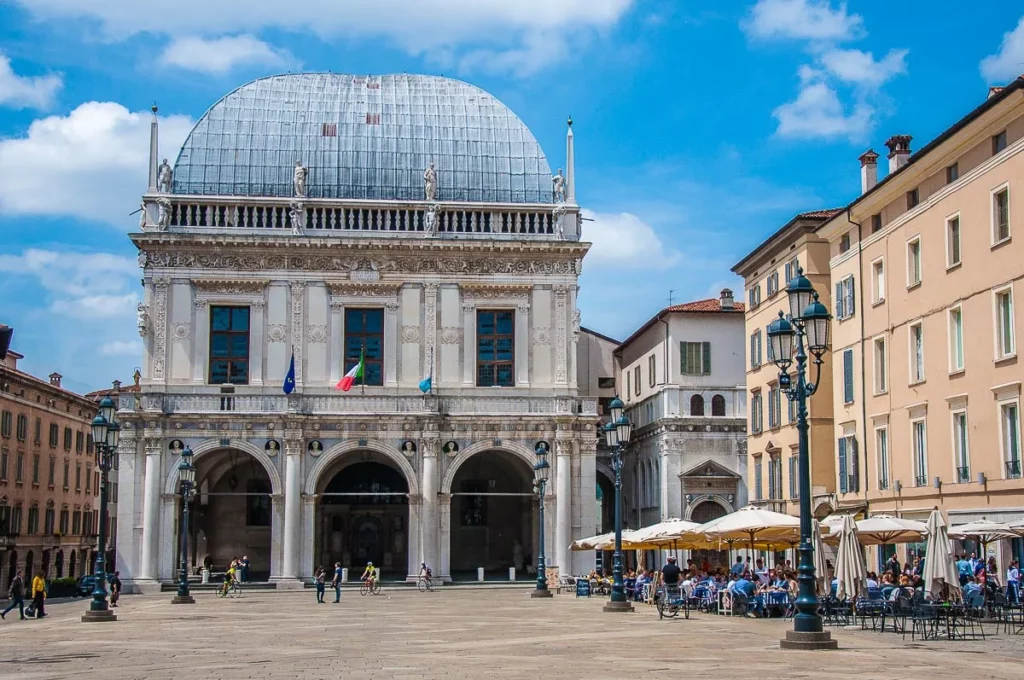
Here you will also find some of the most striking in looks and interesting in terms of history and art cities and towns in Italy. For example, Lombardy’s capital Milan is known for its Duomo, Leonardo da Vinci’s Last Supper, and as one of the most important centres of the world’s fashion industry.
Each year, many people flock to Milan attracted by the prospect of seeing famous museums and masterpieces and/or of shopping in the city’s high-fashion boutiques. The nearby three large international airports make a visit to Milan super easy from anywhere in Europe and the world.
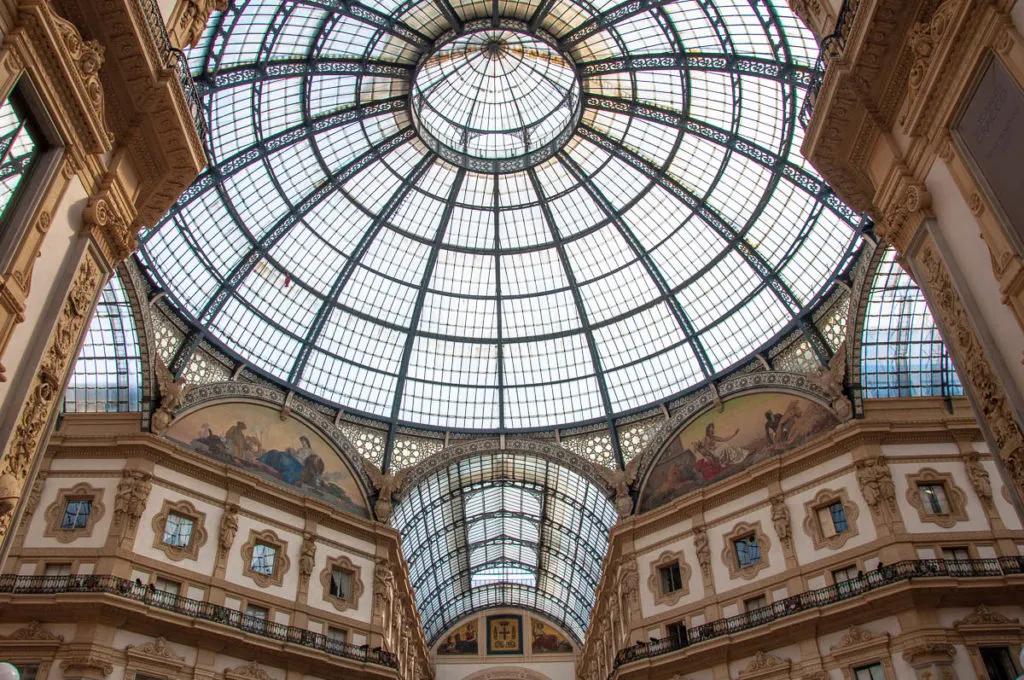
Yet, Lombardy is not all about Milan. This Northern Italian region is also rich in smaller cities and quirky towns where you can get truly close to history, art, nature, and the authentic Italian way of life.
So, in this blog post today, I want to introduce you to 15 fabulous cities and towns in Lombardy, Italy. For completeness of records, Milan is among them. There are also many hidden gems on the list like Brescia and Limone sul Garda as well as the Renaissance city of Mantua, the city of violins Cremona, and the beautifiul lakefront towns of Bellagio, Como, and Desenzano del Garda.
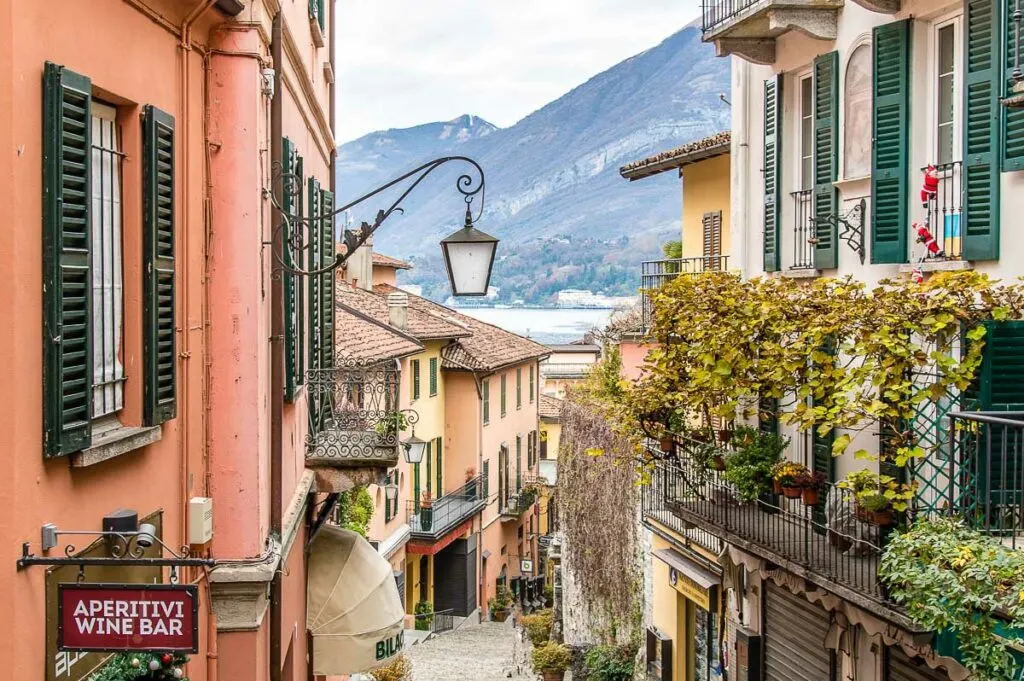
Some of these Lombardian destinations are small and some are large. They all, however, have the wow factor and are places that have a lot to offer to the discerning traveller. From beautiful settings and exuberant historic centres to clusters of museums with precious artifacts and centuries-old churches, visiting them guarantees you a deep exploration of the best that Italy has to offer.
I had the pleasure of visiting all of these 15 Lombardian cities and towns during the six years that I spent living in Italy. While my family and I resided in the neighbouring Italian region of Veneto, the excellent local road and railway connections and our constant desire to explore often had us cross into Lombardy for day trips and longer stays.
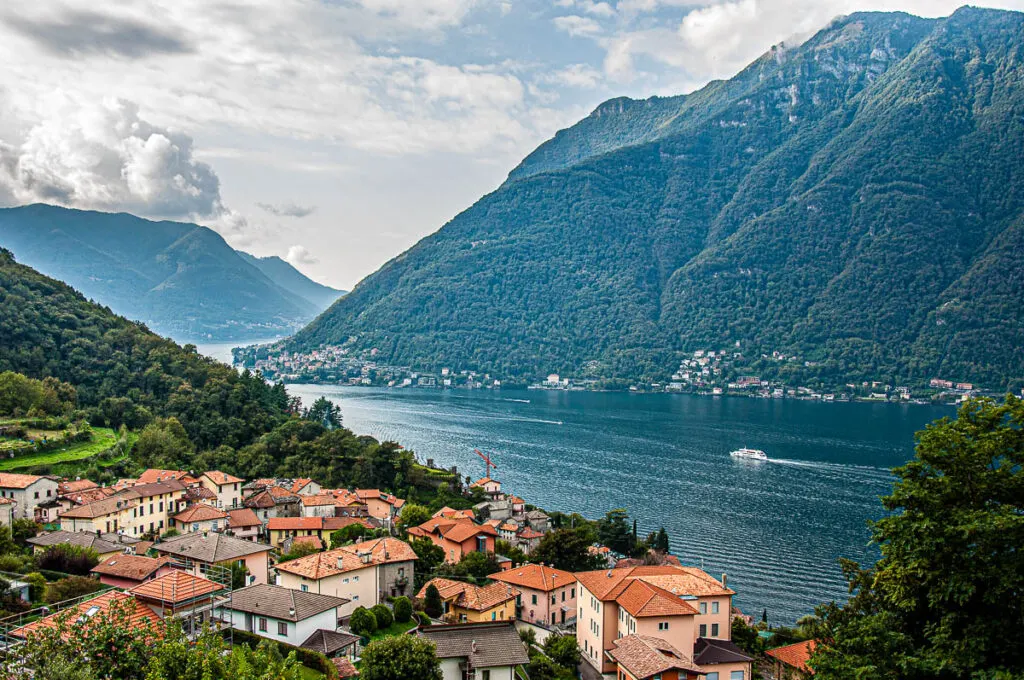
Now, I want to share with you everything that I learned about the best cities and towns to see in Lombardy. Perhaps you are planning a visit to Milan, are looking into ideas for interesting places to discover in the north of Italy or need suggestions for easy day trips in the area.
I hope that this alphabetical list of cities and towns in Lombardy will give you many starting points for explorations of the region, exciting visits to local landmarks, and perfect places to use as a base during your stay here. And if you need any more convincing that Lombardy is a must-see, have a look also at this blog post:
Finally, at the end of this blog post, I have also included lots of practical tips for your visit to Lombardy. From how to travel around this Northern Italian region to what tours and activities to enjoy here, it’s all geared to make your travel planning as smooth as possible.
Have a look!
Map of 15 Cities and Towns in Lombardy, Italy You Will Love
First things first! Let’s pinpoint on the map the exact locations of the 15 cities and towns in Lombardy, Italy that you will love visiting. In alphabetical order, they are Bagolino, Bellagio, Bergamo, Brescia, Como, Cremona, Desenzano del Garda, Limone sul Garda, Mantua, Menaggio, Milan, Monza, Monte Isola, Sirmione, and Varenna.
Here they are organised in groups depending on their size and location:
Large Cities in Lombardy: Milan, Brescia, Monza, Bergamo
Cities of Art in Lombardy: Cremona, Mantua
Small Towns in Lombardy: Bagolino
Lakefront Towns in Lombardy: on Lake Como – Bellagio, Como, Varenna, Menaggio; on Lake Garda – Sirmione, Desenzano del Garda, Limone sul Garda; on Lake Iseo – Monte Isola
I made the above map using Google Maps, so you can use it just like any other map in this handy tool. You can zoom in and out, calculate directions by car and public transport, and use it for navigation.
Above all, I hope that this map will give you a good visual idea of the exact location of the 15 cities and towns in Lombardy covered in this blog post. Many of them are right next door to one another and very easy to get to by road and railway. So, they offer many opportunities for sightseeing and day trips even on the shortest of breaks in this beautiful corner of Italy.
15 Must-See Cities and Towns in Lombardy, Italy
Pin for Later!
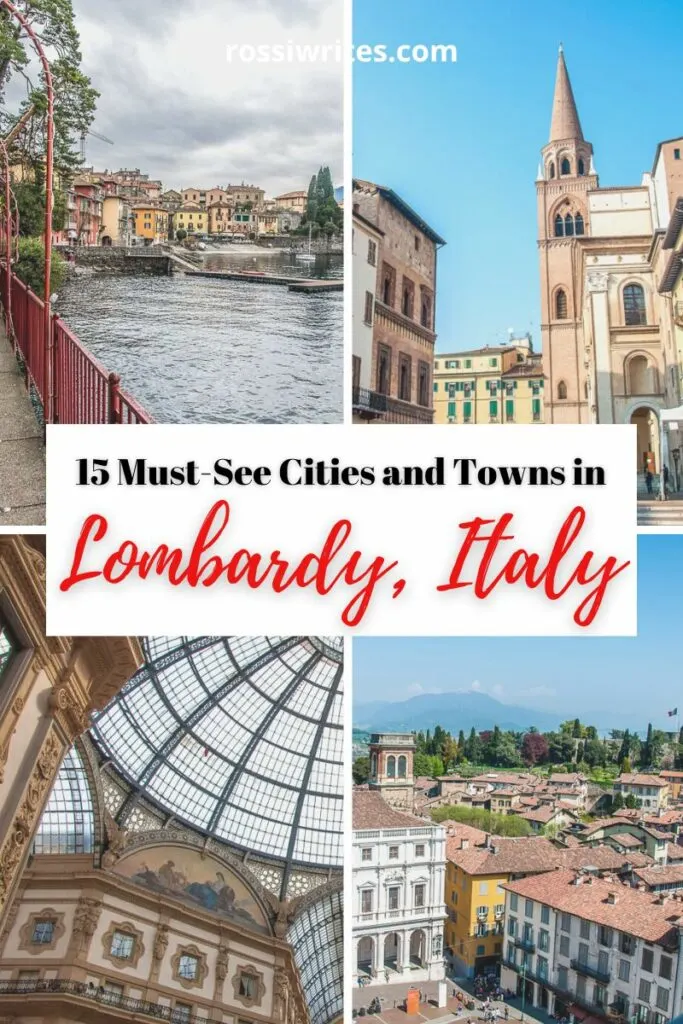
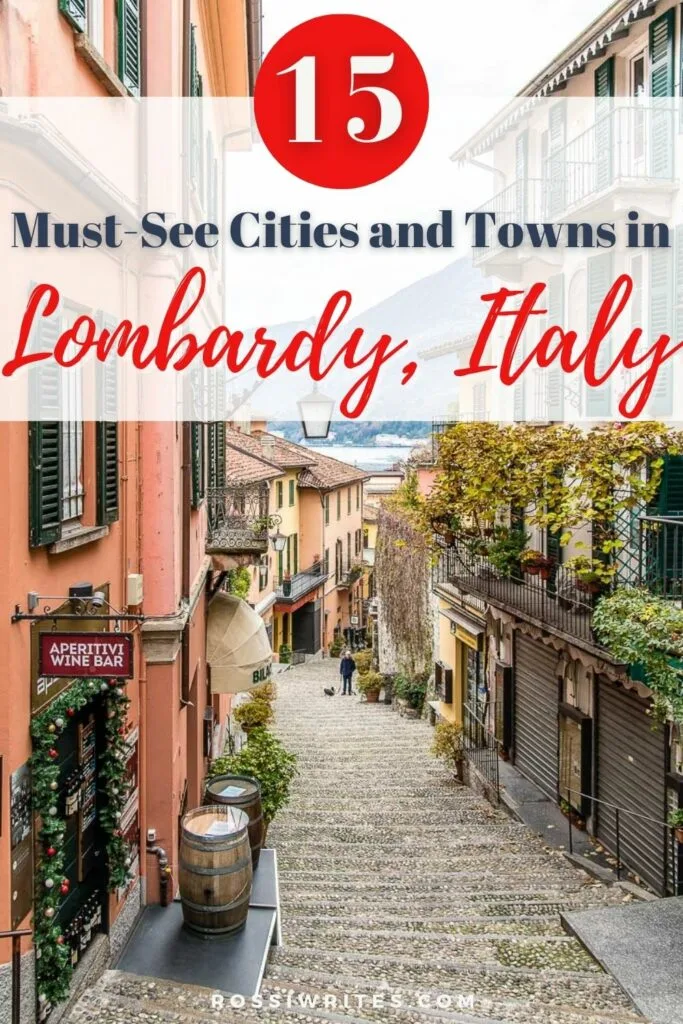
1. Bagolino – The Carnival Town of Lombardy, Italy
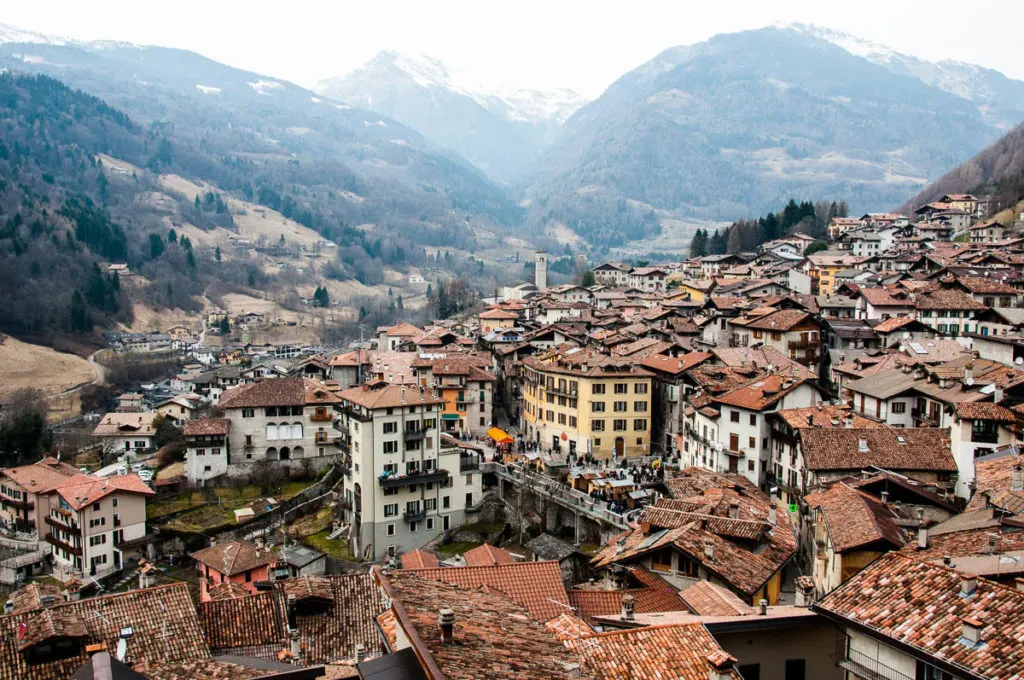
Bagolino is a tiny town built on a steep slope in the deep Valley Sabbia in the Prealps of Lombardy. The road to it turns and curves through the mountains revealing breathtaking views over the nearby Lake Idro.
Although small, Bagolino has three unique things that make it a great destination in this verdant corner of Lombardy in Italy:
- Bagoss – a type of cheese that is produced only here. It has a lovely dense and salty flavour with hints of walnuts and chestnuts. Having a thick slice of Bagoss in a soft bread roll feels like a feast in itself.
- Church of San Giorgio – this 17th-century church has a prime position on the edge of a rocky outcrop. Standing in its loggia feels like being in an art gallery – the tall mountains on the horizon and the town spilling down the steep slope below your feet seem to have been painted by an Italian master. And then, inside the church, you can admire masterpieces by Titian, Tintoretto, and Palma the Young.
- Bagolino Carnival – a unique celebration taking place in the days before the start of Lent. The whole town comes together to have fun. The local people split into two groups – the Balarì and the Mascher – to recreate many centuries-old traditions.
Insider Tips:
Visiting Bagolino for its Carnival is a great experience to have in Italy. Authentic and completely local, this is a celebration that has been classified as one of the most important ethnological discoveries of the last 200 years. Thanks primarily to its isolated mountainous position, Bagolino has managed to preserve a carnival tradition like no other. In fact, the source of the music and the choreography of the dances of the Bagolino Carnival is yet to be determined.
I had the chance to spend a day at Bagolino Carnival back in 2017. I wrote this blog post about it detailing our experiences there. Seeing the local people dressed for the occasion and immersing themselves with happy hearts in the carefully preserved local traditions is a memory I’ll cherish forever.
2. Bellagio – The Lake King of Lombardy, Italy
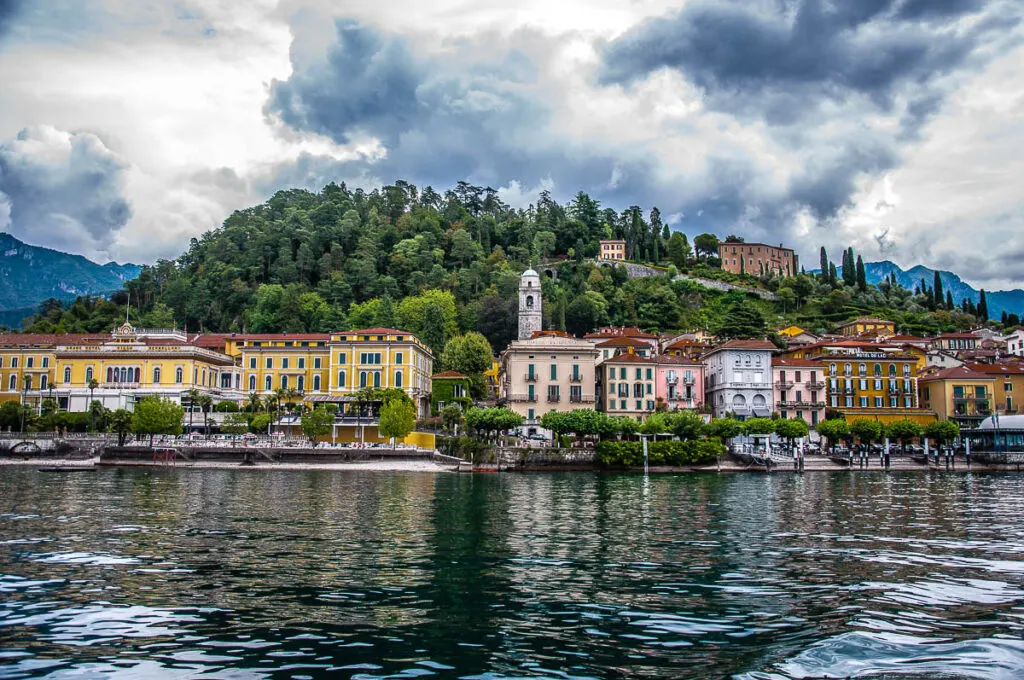
Bellagio is a small Lombardian town with large international fame. It enjoys a prime location right at the meeting point of the three branches of Italy’s famous Lake Como. Thus this elegant town offers splendid views three ways – up towards the Alps and down the Como branch and the Lecco branch of the lake.
Hundreds of thousands of people visit Bellagio each year. It’s easily one of the most popular destinations in Lombardy in particular and in Italy in general. The hubbub takes over the town’s historic streets with visitors eager to experience the best of Lake Como.
They say that Bellagio is where the famous Roman author and magistrate Pliny the Younger used to have two villas. One called Tragedia and the other – Commedia. Apparently, he would split most of his time between the two. Lucky man!
Tragedia was on a small elevation above the lake. Commedia was right on the water so that Pliny the Younger could easily fish from his bedroom. Although the exact locations of the two ancient villas are unknown, it’s easy to understand why many experts think that both Tragedia and Commedia were where the town of Bellagio stands nowadays. The setting is perfect plus it provides splendid views and the Ancient Romans were true masters of picking the best locations for their abodes.
Well, most people are not lucky enough to have a villa (or two) in Bellagio but here are some of the best things you can see and do here during your holiday in Lombardy:
- Punta Spartivento – a small promontory where Lake Como splits into three branches with the Lecco branch to the right, the Como branch to the left, and the upper Colico branch of the lake pointing straight up to the north. It’s a truly charming spot with fantastic panoramic views. A must-see when in Bellagio.
- Villa Melzi – a beautiful lakefront villa from the early 19th century. It has a carefully curated garden where you can see Egyptian statues (from Napoleon’s campaign in Egypt), and a Venetian gondola. It also has a small archaeological museum with Etruscan and Roman finds.
- Basilica of San Giacomo – an imposing 12th-century church in the Lombard Romanesque style. Among its many masterpieces are mosaics from the early 20th century and a ‘Deposition of Christ’ attributed to Perugino’s school.
- Church of San Giorgio – a small 12th-century church. This is where a precious wooden statue of the Madonna is preserved. The statue is one of the religious symbols of Bellagio. Each September, the town celebrates its feast day. This is when the local people carry the Madonna in their hands through the streets of the historic centre.
- Historic center – traditionally referred to as Il Borgo, Bellagio’s historic centre is a wonderful maze of steep narrow streets and tall pastel-coloured houses. Dotted with small shops selling local crafts, elegant boutiques selling silk accessories, and a seemingly endless number of eateries, it’s a great place to explore on foot.
- Catch the Ferry/Hydrofoil – throughout the day ferries and hydrofoils regularly connect the many towns on the shores of Lake Como. Catching a ferry or a hydrofoil is a great way to enjoy the fantastic natural setting. Sitting on the deck and watching Bellagio slowly drift away in the distance is a very cinematic experience. Two easy and inexpensive ferry trips that you can take from Bellagio are to the towns of Menaggio (see point 10 below) and Varenna (see point 15 below) right across the water. Click to find out how to navigate Lake Como.
Insider Tips:
If you can, try to visit Bellagio and Lake Como during the low or the shoulder seasons. Here is why:
Otherwise, this is a very popular destination in Lombardy and the high season sees a great influx of people. As the town is so small, navigating the crowds can become quite a tedious exercise.
Having been to Bellagio both during and outside of the high season, for me fewer crowds mean a bigger chance to truly immerse yourself in the delightful atmosphere of this Lombardian lakefront town.
Tours and Activities in Bellagio, Lombardy:
If you only have a limited amount of time for Bellagio and prefer to be shown around by a professional tour guide, you can book this highly recommended day tour from Milan that covers all the must-see places. For a private guided tour of Bellagio and Lake Como, click here. For an unforgettable way to experience Lake Como when you are in Bellagio, consider booking this kayak tour.
Learn More:
3. Bergamo – The Gem of Lombardy, Italy
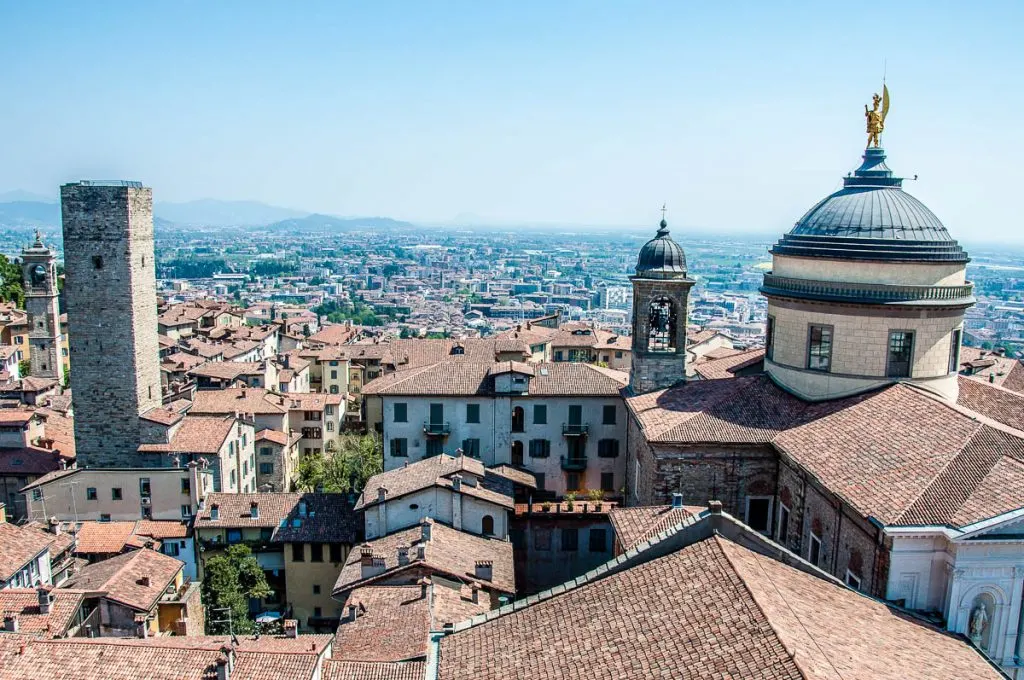
Bergamo is a gem of a city with a beautiful hilltop location, a wonderful collection of must-see sights, and this relaxed atmosphere where you immediately immerse yourself in the Italian way of life. Bergamo is especially interesting to visit as it is a curious mixture of Lombard and Venetian styles and influences.
With a millennial history, in the Middle Ages Bergamo was a Lombard Duchy. However, in 1428 it was ceded to the Republic of Venice. The Venetians kept hold of the city for over three and a half centuries. They built around it a ring of massive defensive walls which nowadays are on the list of UNESCO World Heritage Sites.
While many people have heard of Bergamo on account of its busy low-cost airport, most travellers who fly in here, usually head directly to nearby Milan or other destinations in Italy. Don’t make the same mistake! If you are planning to spend a few days in Lombardy, then make time to explore this small and very beautiful city. After all, Bergamo is just over 45 mins away by train from Milan (and right next door to one of Italy’s major airports!).
One of the most curious things about Bergamo is that it has two parts:
- Citta’ Alta (Upper City) – this is Bergamo’s old town where the architecture of the Middle Ages, the Renaissance, and the Baroque meet and mingle. Perched on top of a hill and surrounded by the mighty Venetian walls, this is the beating historical heart of the city.
- Citta’ Bassa (Lower City) – this is Bergamo’s modern expansion on the flatlands beyond the 16th-century Venetian defensive walls. Expect large imposing buildings, wide boulevards, and bustling shopping streets. The central part here is known as Centro Piacentiniano – as it was designed almost a century ago by the Roman architect Marcello Piacentini. It has a raw angular elegance to it, lots of light, and it gives you the feeling that you can see ahead for miles, so straight are its main streets.
There are many must-see sights, historic streets, and hidden corners to discover one by one during your visit to Bergamo in Lombardy. Here are some of the very best things you can see and do here:
- Centro Piacentiniano – go for a short walk around Bergamo’s modern central part to admire the architecture and get your bearings in the city.
- Funicular – take the funicular from Citta’ Bassa to Citta’ Alta. The ride is short, steep, and a lot of fun.
- Piazza Vecchia – a beautiful central square surrounded by some of Bergamo’s most important historic buildings. Apparently, the famous Swiss-French architect Le Corbusier described Bergamo’s Piazza Vecchia as the most beautiful square in the world!
- Basilica of Santa Maria Maggiore – an expansive church richly decorated with amazing frescoes, stuccoes, and tapestries.
- Capella Colleoni – this church-cum-mausoleum has one of the most stunning marble exteriors you will see in Northern Italy. Inside, the chapel is covered in frescoes and houses the tombs of the 15th-century captain-general of the Republic of Venice Bartolomeo Colleoni, and his daughter Medea.
- Palazzo della Ragione – an imposing 12th-century building that has changed its purpose several times throughout the centuries – from a town hall and tribunal to a library and even theatre!
- Museum of the Stories of Bergamo – this is a network of six historic places and museums. Visiting them one by one will deepen your understanding of and your appreciation for this beautiful city in Lombardy, Italy.
- Accademia Carrara di Belle Arti di Bergamo – this is an important art gallery that also has a renowned academy of fine arts under its umbrella. Its Pinacoteca houses many masterpieces by some of the greatest Italian artists. Among them are Andrea Mantegna, Carlo Crivelli, Vittore Carpaccio, and Giovanni Bellini.
- Polenta e osei – round off your exploration of Bergamo with a taste of the local polenta e osei cake. It’s made of polenta, sponge, chocolate, butter, liquor, hazelnuts, and marzipan. It’s then decorated with chocolate birds on top. Quite the treat! Click for more details about polenta and why you should give it a try when in Northern Italy.
Insider Tips:
I loved visiting Bergamo’s Civic Tower. Known locally as Campanone, this is the tall bell tower on Piazza Vecchia in Bergamo’s Citta’ Alta. We were up there just taking in the views when the bells suddenly started ringing the hour. The deafening sound made me almost jump out of my skin!
In the shadow of Campanone, don’t miss the Palazzo del Podesta. This beautiful palace nowadays houses the Museum of 16th-century Bergamo where you can learn more about life in the city under Venetian rule. On the ground floor of the palace, there are significant archaeological excavations showing Bergamo’s Roman ruins, too.
For a taste of what Bergamo has to offer, have a look at this short video of the Basilica of Santa Maria Maggiore in Bergamo. It’s beautiful! Or you can see more photos of Bergamo’s skyline on my blog’s Facebook page.
Tours and Activities in Bergamo, Lombardy:
If you only have a limited amount of time for Bergamo and prefer to be shown around by a professional tour guide, you can book this in-depth tour that covers the main landmarks of the Citta’ Alta. For a private guided tour of Bergamo, click here. Foodies mustn’t miss this eat better tour that introduces you to Bergamo’s rustic specialties and traditional dishes. Otherwise, for an unforgettable way to experience the beautiful surroundings of Bergamo, consider booking this e-bike tour.
4. Brescia – the Roman Queen of Lombardy, Italy
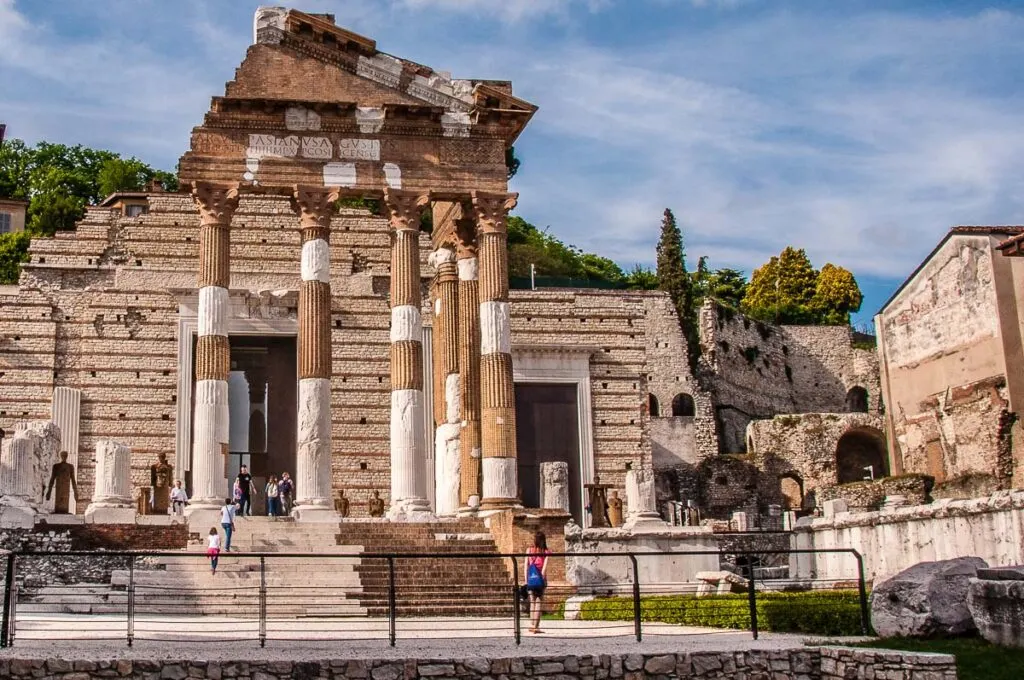
Brescia keeps itself firmly off the beaten track. Yet, this second-largest city in Lombardy, Italy has a lot to offer to the traveller eager to discover unique sights and breathtaking landmarks.
With a history that spans over 3,200 years, Brescia is a lively and exciting city. Its monumental Roman ruins are the best-preserved Roman public structures in the whole of Northern Italy. Its sunlit squares are surrounded by imposing historic churches and buildings. A massive medieval castle crowns the hill at the bottom of which the city stretches out. Most curiously, Brescia also has a stable of some of Italy’s most avant-garde buildings. Among them is the country’s first-ever skyscraper. Called Torrione – the Big Tower – it was erected between 1930 and 1932.
Brescia is just over 30 mins away by high-speed train from Lombardy’s capital Milan. Here are some of the very best things you can see and do in this exciting Lombardian city:
- Monumental area Roman Forum with Capitolium of Brixia – imposing Roman ruins with an underground floor where you can see beautifully preserved Roman frescoes. This is a UNESCO World Heritage Site.
- Monumental complex of San Salvatore-Santa Giulia – an enormous museum with over 11,000 archaeological finds and works of art. It’s housed in a former monastery. Expect impressive Roman excavations, endless rooms with priceless artifacts, and stunning fully frescoed spaces. Absolutely gorgeous and inspiring. A must-see! This is a UNESCO World Heritage Site, too.
- Castle of Brescia – this is a huge castle which nowadays houses several museums and exhibits. Its position on the steep Cidneo Hill offers unparalleled views of Brescia. The castle also hosts festivals and historic reenactments.
- Large central squares – Brescia is blessed with some of the most beautiful historic piazzas in Italy. Don’t miss the Art Deco Piazza della Vittoria (with its Torrione – the first skyscraper built in Italy) and the Renaissance Piazza della Loggia (with the inspiring Palazzo della Loggia and the beautiful astronomical clock).
- Duomo Vecchio and Duomo Nuovo – the Old and the New Cathedrals of Brescia.
- Teatro Grande – a lavish opera house.
Insider Tips:
I absolutely love Brescia and everything this exciting city has to offer. Turning every corner here reveals yet another beautiful surprise. My best tip for Brescia is to simply head out and explore the city with your most comfortable shoes on your feet. Enter every church, every small museum. Sit at a cafe’s outside table on a sunlit piazza and immerse yourself in some people-watching and architecture-gazing.
However, keep the bulk of your time for the Santa Giulia City Museum. It is absolutely enormous and there is so much to see here. My favourite things were the Cross of Desiderius, the Roman mosaics, and the many fully frescoed spaces. Such a visual delight!
Brescia needs at least a couple of days to cover its many sights in some depth. This is a truly multilayered city where many landmarks present a mix of many historic periods. You can actually see how history happened here and how it shaped the city.
Part of the pleasure of being in Brescia is simply to stop and look, take it all in, and even imagine how imposing and grand the Roman architecture must have been millennia ago. Don’t think of Brescia as a place to rush. For all there is to see and do here, the amount of information and impressions is such that you need time to truly see it, enjoy it, absorb it, and fully commit it to memory.
For detailed information about this must-see city in Lombardy, have a look at:
Tours and Activities in Brescia, Lombardy:
If you only have a limited amount of time for Brescia and prefer to be shown around by a professional tour guide, you can book this walking tour for up to ten people that covers the main landmarks of the historic centre. Brescia is next to one of Italy’s most famous wine-producing areas – Franciacorta. Head there on a guided tour to sample the excellent sparkling wines and learn more about the centuries-old traditions behind their production.
5. Como – The Town of Silk and Volts in Lombardy, Italy
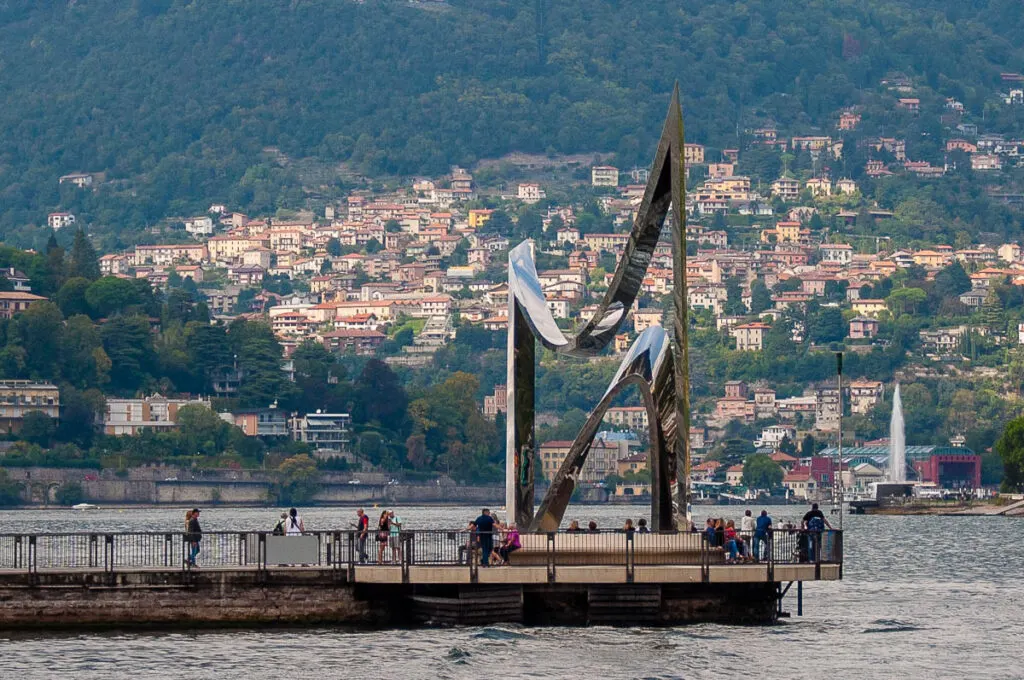
Como is a charming town on the shores of Lake Como in Lombardy. With a history that spans millennia, nowadays Como is rich in Roman ruins and gorgeous medieval and Renaissance architecture. Many people head to Como for a day trip as it is so easy to reach from Milan by train and road. The town also offers quick access by ferry and bus to the other towns dotted along the shores of Lake Como. Click to find out how.
Throughtout the centuries, many historic personalities have lived and worked in the town of Como in Lombardy. Among them are the ancient Romans Pliny the Elder and Pliny the Younger. Uncle and nephew, the former was a Roman statesman, naturalist, and author of Natural History (which is considered to be the first-ever encyclopedia). The latter was a lawyer, author, and magistrate of Ancient Rome whose letters have survived throughout the millennia and give us precious historic information about the past.
Alessandro Volta is another famous person with a close connection to Como. As the inventor of the electric pile – the originator of the electric battery – his name has become a standard unit of measure.
There is lots to do and see in and around the town of Como. Here is a shortlist with some of the very best things to visit and enjoy here:
- Duomo – officially known as the Cathedral of Santa Maria Assunta, this is the main church of the town of Como. You will find it in the historic walled centre. It is the third-largest religious building in the Northern Italian region of Lombardy. It’s preceded only by Milan’s Duomo and the monastery of Certosa di Pavia.
- Tempio Voltiano – this is a Neoclassical building inspired by Rome’s Pantheon. It hosts a museum dedicated to Volta’s life and achievements.
- Life Electric – a monument to Volta, its shape replicates the electric tension existing between the two poles of a battery. Its author is the renowned architect Daniel Libeskind.
- Porta Torre – this 12th-century gate used to be the main entrance to the walled old town.
- Town Walls – the defensive walls of the town of Como were originally built in the 1st century BC by Julius Caesar. They were destroyed in the 12th century and then erected again.
- Como-Brunate Funicular – a cute old-fashioned funicular that will take you to the hilltop village of Brunate where you can enjoy spellbinding panoramas of the town of Como and Lake Como. With many beautiful Art Nouveau villas gracing its streets, Brunate is a great point of departure for an invigorating hike in the hills flanking Italy’s most famous lake.
- Villa Olmo – a majestic villa at the end of Como’s long lakefront promenade. Free to visit, it’s surrounded by a large park and in summer has a lovely lido and two swimming pools for Como’s citizens and visitors to enjoy for a humble entrance fee.
Insider Tips:
The town of Como is famous for its silk textiles. Locally produced and with traditions that date back to the 14th century, Como’s silks are prized all over Europe and the world. To learn more about the local silk production, you can visit the Museo della Seta in town and shop for high-quality silk products in the local boutiques.
If you are after original, locally-made products, don’t miss Acqua del Lario. This lovely shop sells an exclusive range of perfumes, frangranced candles, and silk scarves inspired by the landscapes and towns of Lake Como.
Tours and Activities in Como, Lombardy:
If you only have a limited amount of time for the town of Como and Lake Como and prefer to be shown around by a professional tour guide, you can book this day tour from Milan that covers many of the main sights and experiences at Italy’s most famous lake. This exciting boat tour of Lake Como leaves from the town of Como’s promenade and it’s’ a great thing to do on a hot summer day. This private cooking class is a must-do if you are a foodie as it will introduce you to the classic dishes of the region of Lombardy.
Learn More:
6. Cremona – The Town of Violins and Torrone in Lombardy, Italy
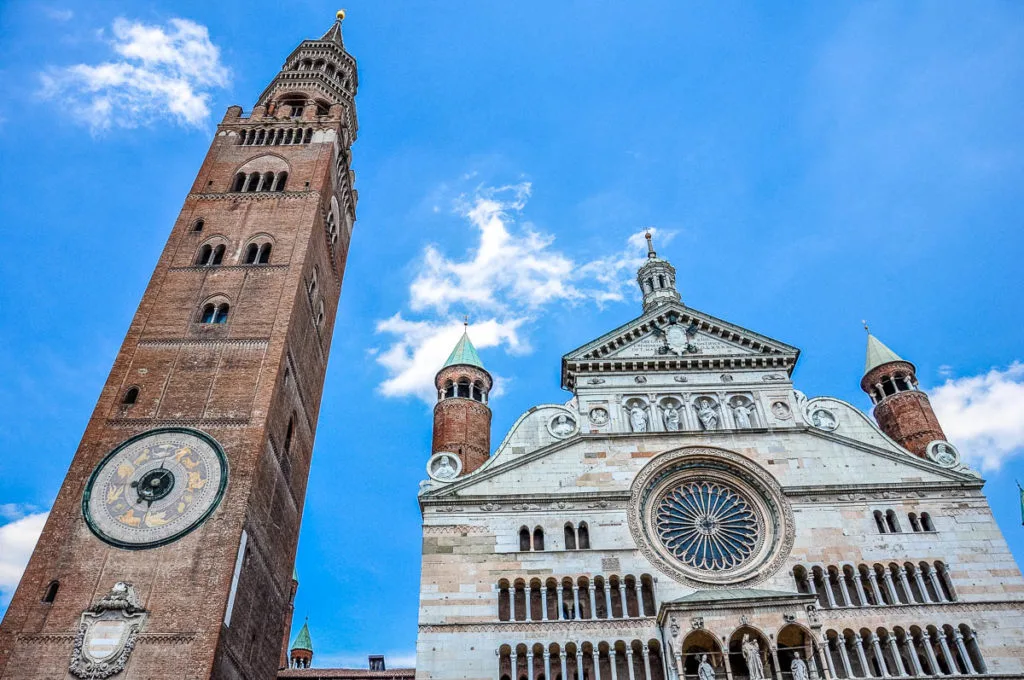
Cremona is a beautiful town in Lombardy, Italy. It’s known all over the world for its violin-making traditions. Among the highly skilled luthiers that called Cremona home throughout the centuries were the famous Andrea Amati and Antonio Stradivari.
Cremona is also known all over Italy for the delicious local nougat called torrone. Traditionally, it’s prepared for the Christmas season. Each year in November, a large festival is held in town dedicated to this delicacy and its artisan makers. The torrone of Cremona is made with egg whites, honey, sugar and blanched almonds. It can be scented with vanilla, cedar or cinnamon.
The torrone of Cremona can be either soft (made with ground almonds) or hard (made with whole almonds). Its recipe is centuries-old and its name comes from the Latin verb torreo which means ‘to toast’.
In addition, Cremona has a gorgeous historic centre dominated by the town’s large cathedral and tall bell tower. Going for a walk around town, you are bound to spend long moments admiring the facades of the historic buildings and palazzi here.
Cremona is just over an hour away by train from Lombardy’s capital Milan. Here are some of the very best things you can see and do in this lovely town. Take your pick:
- Museo del Violino – a beautifully curated museum where you can explore the history and traditions of violin-making and the role of Cremona at the heart of this delicate art.
- Cathedral, Torrazo, and Baptistery of Cremona – a must-see ensemble of three imposing buildings on Piazza del Comune in the historic centre of the town. Cremona’s 12th-century Cathedral of Santa Maria Assunta has an extensive collection of works of art in addition to beautiful frescoes. The art critics call it the Sistine Chapel of the Po Valley. The Torrazzo is a sturdy bell tower that dates back to 1525. 111 m high, currently it’s the world’s oldest still-standing brick structure taller than 100 m. Embedded in its facade is the world’s largest astronomical clock. The Baptistery is an octagonal building next to the Cathedral.
- Museo Civico Ala Ponzone – come here for the large collection of art by painters from Cremona and Lombardy. Masterpieces by Caravaggio and Arcimboldo make this museum a must-see. Don’t miss the music rooms here, too. In them, you will discover a rare collection of plucked string instruments with the oldest of them dating back to the 17th century. You can also buy a combined ticket for the Museo del Violino and the Museo Civico Ala Ponzone.
- Palazzo del Comune – originally built at the start of the 13th century, this medieval building has high porticoes with frescoed ceilings and a strong connection to the history of Cremona.
Insider Tips:
Put a bit of time aside to visit Cremona’s Archaeological Museum. Here you can find out more about the town’s Roman past and admire fragments of Roman mosaics in a restored domus.
If Cremona is your base for your explorations of this corner of Italy, then pencil in day trips to the nearby town of Crema in Lombardy and cities of Piacenza and Parma in the Italian region of Emilia-Romagna.
Another great destination in the vicinity of Cremona is the small village of Grazzano Visconti. Built in the Neo-Gothic style and with a beautiful castle at its heart, it’s a curious place to visit. Here you can learn more about the traditional local crafts and the count who brought the village back to life at the start of the 20th century.
Tours and Activities in Cremona, Lombardy:
If you want to see Cremona but can’t be bothered with organising it all, you can book this day trip from Milan and have it all done for you.
7. Desenzano del Garda – The Largest Town on Italy’s Lake Garda
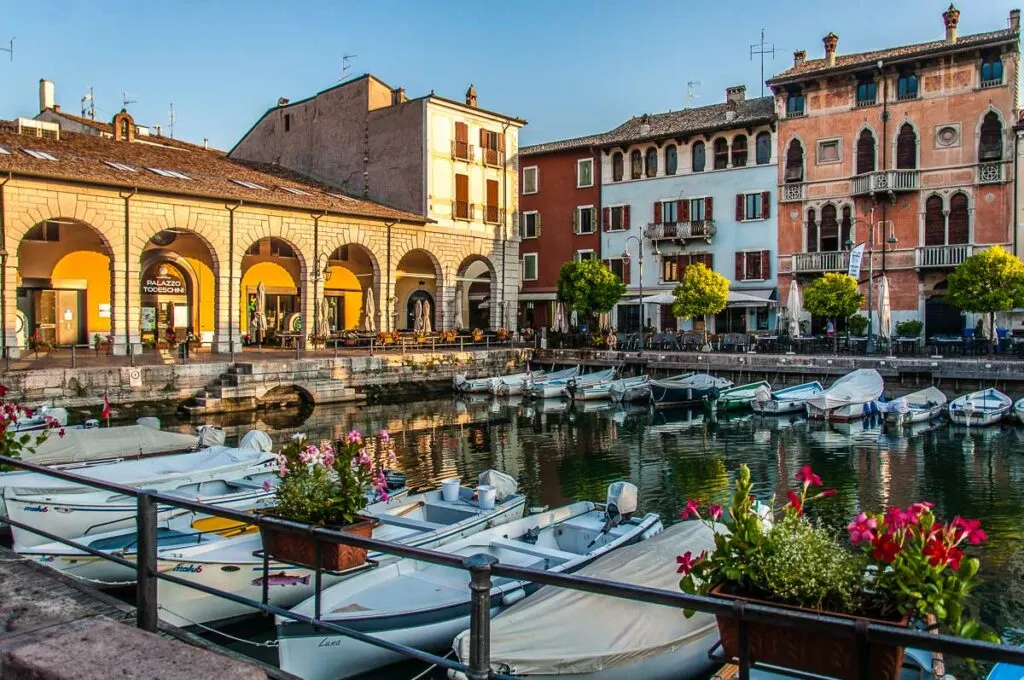
Desenzano del Garda is the largest town on Italy’s largest lake – Lago di Garda. You will find it just over an hour away from Milan. This makes it one of the easiest to visit towns in Lombardy. Considering how pretty it is, Desenzano is a must-see destination here.
With its long promenade, historic harbour, and narrow streets dotted with boutiques and trattorias, Desenzano del Garda has a very hip air to it. The blue waters of the lake gently lap the town’s beaches. White yachts and boats are moored in straight lines just off the shore. In the distance, you can glimpse the long promontory of Sirmio crowned by the medieval castle and the Roman ruins of the town of Sirmione (see point 14 below).
Here are some of the very best things you can see and do in and around Desenzano del Garda – a pretty as a picture lakefront town in Lombardy, Italy:
- Medieval Castle – over ten centuries old, it stands at the same spot that was once occupied by an ancient Roman fort. Nowadays, Desenzano del Garda’s hilltop castle offers splendid panoramic views over the town and the lake. Every summer, it hosts concerts and theatrical performances, too. Click here for more details about the most beautiful castles around Lake Garda.
- Roman Villa – an important archaeological find. Come here to admire the beautiful and well-preserved ancient Roman mosaics. It is thought that Desenzano’s name is a corruption of the name of the owner of the villa – a Roman citizen called Decentius.
- Archaeological Museum – this must-see museum is very well-curated and has a wonderful selection of artifacts. The star of its collection is the oldest plough in the world.
- Duomo – a late 16th/early 17th-century church with an imposing facade. It stands in Desenzano’s historic centre. Inside it, you can admire a very dramatic Last Supper by Giovanni Battista Tiepolo. Interestingly, the painting is executed in portrait orientation rather than the traditional for the Last Supper theme landscape orientation.
- Porto Vecchio – a very picturesque small port surrounded by centuries-old palaces.
Insider Tips:
Many festivals and events take place in Desenzano del Garda all throughout the year. Make sure that you check the local listings to see what’s on during your visit. I particularly loved going there on day trips around Christmas. Here is a short video from a Christmas event staged in Desenzano del Garda in the last days of 2017. As you can see, there is entertainment, people are out in force, and lovely Christmas lights are projected on the facades in the historic centre of the town.
In summer, there are many nearby beaches to sunbathe on. Swimming in Lake Garda is so nice! At the height of summer, the water gets very pleasantly warm.
Desenzano del Garda is also perfectly positioned for trips and explorations in Lombardy and the neighbouring northern Italian region of Veneto. You can drive or take the bus along the western shore of Lake Garda and visit the other Lombardian towns here – from Sirmione to Limone sul Garda. You can pay the Renaissance city of Mantua a visit or head to Verona, Vicenza, Padua, and even Venice in Veneto on a day trip. The journey by train and road is quick and easy.
For detailed information about Desenzano del Garda in Lombardy and reaching Lake Garda from both Lombardy and Veneto, have a look at these blog posts:
- Desenzano del Garda, Italy – How to Visit and Best Things to Do in the Largest Town on Lake Garda
- Five Easy Ways to Travel from Milan to Lake Garda in Italy
- Five Easy Ways to Travel from Verona to Lake Garda in Italy
- Five Easy Ways to Travel from Venice to Lake Garda in Italy
Tours and Activities in Desenzano del Garda, Lombardy:
If you want to visit Desenzano del Garda but can’t be bothered with organising it all, you can book this day trip from Milan or this day trip from Verona and have it all done for you.
8. Limone sul Garda – The Town of Citrus Groves in Lombardy, Italy
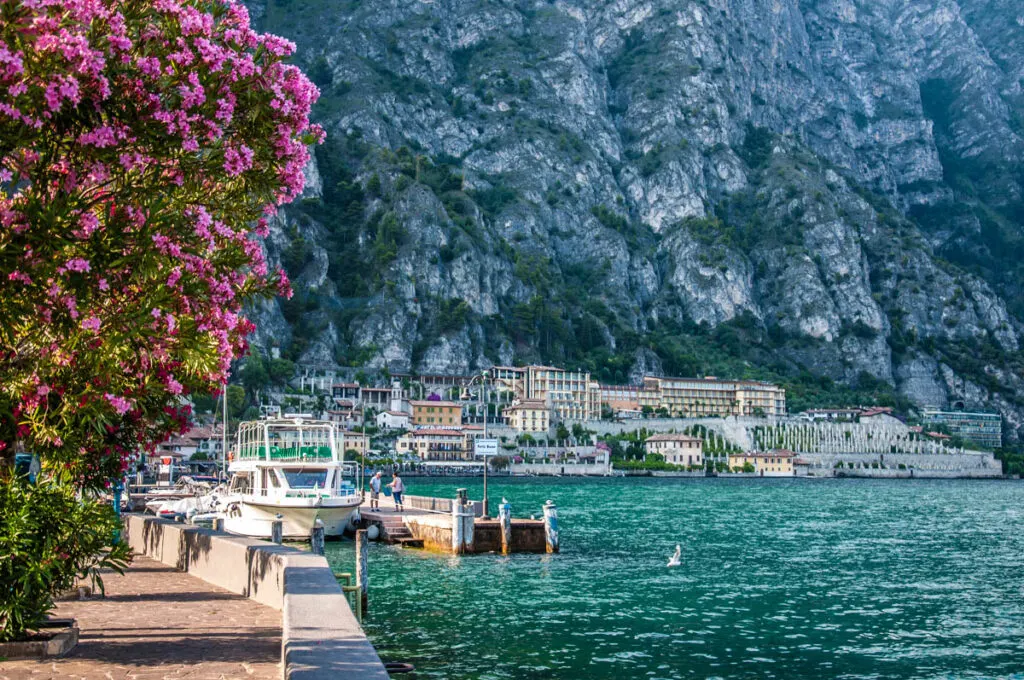
Limone sul Garda is an elegant town on the shores of Lago di Garda – Italy’s largest lake. Limone is famous for its citrus groves. Planted on terraces fortified with stone walls, hundreds of citrus trees grow around this small Lombardian town giving it a decidedly Mediterranean feel.
Hence, citrus fruit and particularly lemons are everywhere in Limone sul Garda! From handmade scented soaps to beautiful ceramics, lemons are stamped, carved, and moulded into dozens of beautiful local products and souvenirs. Plus, the restaurants and eateries here serve delicious lemonade made with locally-grown lemons. It’s incredibly refreshing on a hot summer day!
Curiously enough, the name of Limone sul Garda doesn’t come from ‘lemon’! Linguists have established that its etymology is rooted either in:
- the Celtic word limo or lemos meaning elm; or
- the Latin term lima (file) in reference to a river, the current of which erodes the ground.
Up until 1932, Limone sul Garda could only be reached by boat or through a steep mountainous path. Apparently, due to this relative isolation throughout the centuries, the locals are famous for their longevity. Many people here reach 100 years of age!
Here are some of the very best things you can see and do in and around this pretty as a picture lakefront town in Lombardy:
- Limonaia del Castel – a restored terraced citrus grove where you can learn more about the centuries-old tradition of growing citrus fruit on the shores of Lake Garda.
- Porto Vecchio – Limone’s historic harbour is a picturesque place to explore. It offers stunning views across the lake and is lined with local restaurants and gelaterias.
- Old churches – walking around the historic centre of Limone sul Garda, you will come across several old churches. Visit them for their lovely frescoes and to learn about the local stories and traditions.
- Strada del Ponale – go for a walk or a bike ride along this brand-new lane. It follows the old path that centuries ago connected Limone sul Garda to the nearby town of Riva del Garda.
- Ferry to Malcesine – take a ferry to the town of Malcesine across the lake. The crossing lasts only about 20 minutes and it opens beautiful panoramic views over the medieval town of Malcesine and the tall mountain – Monte Baldo – behind it.
Insider Tips:
When visiting Limone sul Garda, put a bit of time aside to go for a drive on the nearby Strada della Forra. It is known as one of the most scenic roads in the world! It was also featured in the James Bond movie, Quantum of Solace.
Strada della Forra leads up to Tremosine sul Garda – officially, one of Italy’s most beautiful villages. Up there and surrounded by old stone houses, you can enjoy majestic bird’s-eye views of Lake Garda.
For detailed information about reaching Lake Garda from the northern Italian regions of Lombardy and Veneto, have a look at these blog posts:
- Five Easy Ways to Travel from Milan to Lake Garda in Italy
- Five Easy Ways to Travel from Verona to Lake Garda in Italy
- Five Easy Ways to Travel from Venice to Lake Garda in Italy
Tours and Activities in Limone sul Garda, Lombardy:
If you only have a limited amount of time for Limone sul Garda and prefer to be shown around by a professional tour guide, you can book this guided walk. It covers the main sights in this beautiful lakefront town.
9. Mantua – The Renaissance Pearl of Lombardy, Italy
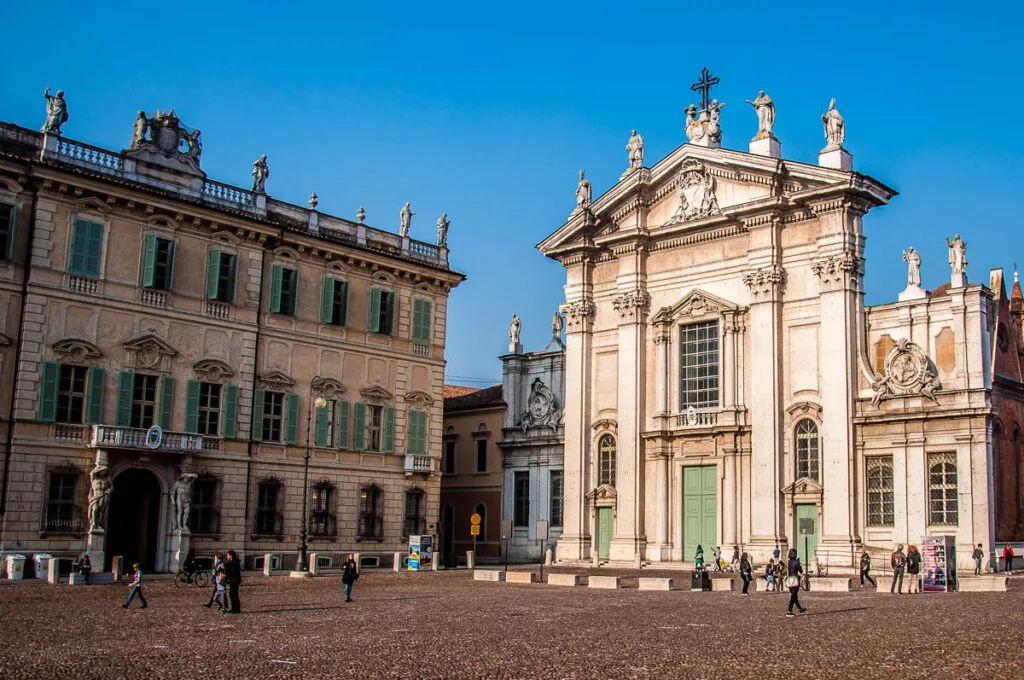
Mantua or Mantova (as they call it in Italy) is a beautiful city to visit in Lombardy. Dotted with exquisite palaces with endless fully frescoed rooms, Mantua’s historical centre is a UNESCO World Heritage Site. Three artificial lakes (created in the 12th century!) surround Mantua on three sides. Under the rule of the Gonzaga family, Mantua became one of the most eminent centres of the Renaissance.
For all it has to offer to the discerning visitor in love with history, music, and art, Mantua is still very much a hidden gem in Italy. Walking around its cobbled streets, you will be forgiven to think that you’ve been transported several centuries back in time. Had it not been for the patina left by the hands of time, everything here – from churches and houses to narrow streets and large open squares – looks just like it was hundreds of years ago.
Here are some of the very best things you can see and do in this must-see Renaissance city in Lombardy:
- Ducal Palace Museum Complex – this is Italy’s biggest architectural museum complex. Built between the 14th and 17th centuries, it was the abode of Mantua’s then-ruling family – the Gonzagas. The visit to Mantua’s Ducal Palace is both elating and overwhelming. There is so much to see here! Particular attention deserves the Camera degli Sposi (Bridal Chamber) frescoed by one of my favourite Italian Renaissance painters – Andrea Mantegna. To get the most out of your visit, consider booking a guided tour of the palace for a knowledgeable and in-depth introduction to its history and art.
- Palazzo Te – this is a 16th-century Renaissance palace of leisure. A guided tour will give you an in-depth understanding of the breathtaking frescoes that adorn the walls and the ceilings of the lavish rooms here.
- Rotonda of San Lorenzo – the most ancient church in the city. It’s built on the spot once occupied by an ancient Roman temple dedicated to the goddess Venus.
- Basilica of Sant’Andrea – this 15th-century church is one of Mantua’s many Renaissance masterpieces. It was built over four centuries and it’s crowned by a large dome.
- Bibiena Theatre – a beautiful 18th-century venue where Mozart gave a concert at 14 years of age. It’s known as the Scientific Theatre because it was originally built to host the assemblies of Mantua’s scientific community.
- Casa di Rigoletto – one of Giuseppe Verdi’s most famous operas – Rigoletto – is set in Mantua. Nowadays, Rigoletto’s House is where you can learn more about the story of the tragic jester of the Duke of Mantua.
Insider Tips:
Mantua is famous for its food. Make sure that you sample the local delicacies. Among them are pumpkin tortelli, cotechino sausage, and Sbrisolona cake. The latter is sold in shops all over the city and makes for a wonderful yet inexpensive present for a loved one back home.
If you have a bit of time on your hands, then schedule a trip to Sabbionetta. Founded in the 16th century, this Lombardian town was built to represent the ideal Renaissance city. Together with Mantua, Sabbionetta is on the UNESCO World Heritage List.
Tours and Activities in Mantua, Lombardy:
If you only have a limited amount of time for Mantua and prefer to be shown around by a professional tour guide, you can book this highly recommended walking tour of the historic centre that covers the best sights and landmarks. If you are a foodie, then don’t miss this market tour of Mantua which ends with a meal of traditional local dishes.
10. Menaggio – The Cute Lakefront Town in Lombardy, Italy
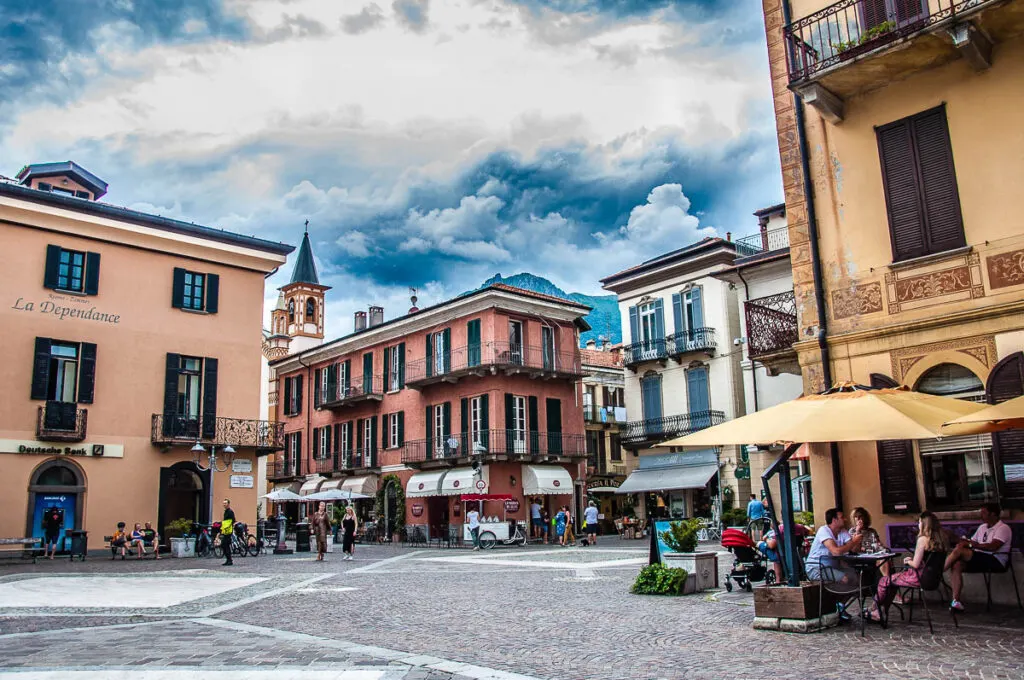
Menaggio is a tiny town on the shores of Lake Como in Lombardy, Italy. You will find it right across the water from Bellagio (see point 2 above). Ferries connect the two all throughout the day and the crossing lasts only about 15 minutes or so.
Small and easy to navigate on foot, Menaggio has a pretty historic centre and many lovely streets to follow at random while taking in the beauty of the local pastel-coloured churches and houses. It’s a great place to spend a couple of hours at. Alternatively, use Menaggio as a base for your exploration of Lake Como and easily travel up and down the shores to several other small Lombardian towns.
Here are some of the very best things you can see and do in and around this cute lakefront town in Lombardy:
- Historic centre – with Piazza Garibaldi opening splendid views over Lake Como and Via Calvi dotted with local boutiques and small shops, the historic centre of Menaggio is a pleasure to explore on foot. Walk up to the oldest part of the town where narrow streets preserve their medieval outlines. A picturesque bridge arches over the Senagra stream and provides the perfect inspiration for a photo or two.
- Villa del Balbianello – a stunning 18th-century mansion with a magnificent garden. You will find it in Tremezzina – a small town down the road from Menaggio. The villa has been used as a setting in several movies including Star Wars Episode II: Attack of the Clones and Casino Royale.
- Villa Carlotta – a 17th-century villa with a fascinating botanical garden. You will find it in Tremezzina – a small town down the road from Menaggio.
- Local beaches – for a swim in the waters of Lake Como, head to one of the beaches around Menaggio. Lido di Menaggio and Lerai Beach attract both locals and visitors.
Insider Tips:
I loved Menaggio’s promenade. This long paved lane follows the lakefront and opens spellbinding views over the towns of Varenna and Bellagio across the lake. Beautifully landscaped and with dozens of patches planted with colourful blooms, walking on the promenade here is a delight for the eyes and the soul.
Tours and Activities around Menaggio, Lombardy:
If you want to visit Villa del Balbaniello in style, you can book this full-day walking and boating tour of Lake Como which includes the very best of the local towns and sights.
Learn More:
11. Milan – The Capital of Lombardy, Italy
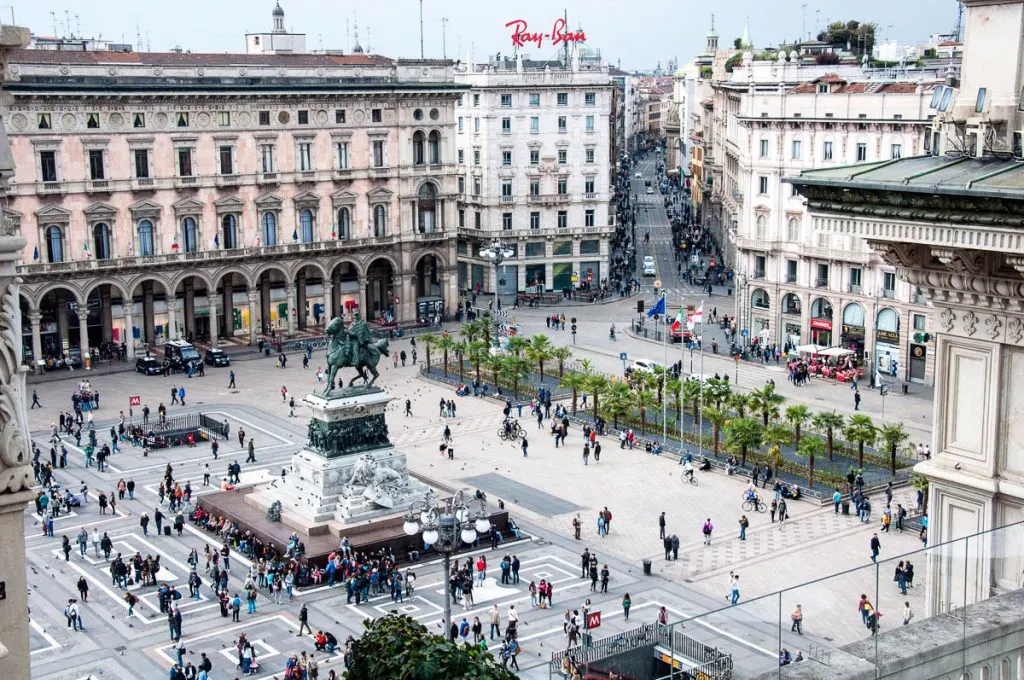
Milan is Lombardy’s capital and also Italy’s wealthiest city. This is a hustling and bustling metropolis where you can certainly feel the modern heart of Italy beating a frenetic drum. In comparison with other smaller Italian cities and towns, at a first glance, Milan may seem a bit grey, rough around the edges, and even a tad uninspiring. You just need to look deeper beneath the surface to easily discover impressive sights.
Many tourists boldly state that there is not much to see in Milan. Others come here exclusively to shop. Yet, Milan has a lot to offer to those seeking to see for themselves Italy’s masterpieces in terms of history, culture, and art. Whatever I say about Milan here, it’s not going to be enough. It’s best to see this large and important Italian city with your own eyes. You can easily spend a week or longer here and still have many sights left to tick off. There really is lots to do and enjoy in Milan!
In a tiny nutshell, here are some of the very best things you can see and do in the Lombardian capital:
- Duomo of Milan – one of the largest Gothic cathedrals in the world. With its lacy facade, it is a sight to behold. Click to buy tickets in advance to visit the Duomo, its splendid rooftop, must-see museum, and archaeological area.
- Sforza Castle – home of the rulers of Milan for many centuries, nowadays this formidable fortress houses many must-see museums and libraries. Click to buy tickets in advance.
- Leonardo da Vinci’s Last Supper – this most famous work of art doesn’t need an introduction. The mural is in the Refectory of the Convent of Santa Maria delle Grazie in Milan. To make sure that you will be able to see it, it is advisable to book your ticket well in advance either on the official website or as part of a skip-the-line guided tour.
- Pinacoteca di Brera – this is Milan’s main public art gallery. Among the masterpieces that you can admire here are works by Andrea Mantegna, Piero della Francesa, Raphael, and Caravaggio.
- Biblioteca Ambrosiana – a historic library with an art gallery. It’s a place that preserves Leonardo da Vinci’s famous Codex Atlanticus and his unfinished Portrait of a Musician, as well as masterpieces by Botticelli, Raphael, and Jan Brueghel the Elder. You can book tickets in advance.
- Galleria Vittorio Emanuele II – Italy’s oldest shopping centre is right next to Milan’s Duomo and is incredibly posh. Come here for the splendid architecture and mosaic panels, the Italian high-fashion brands, and to have a coffee and a pastry at the historic patisserie Marchesi. At Christmas, stop to admire the splendid tree decorated with huge Swarovski crystals.
- Navigli – these are Milan’s ancient navigable canals which, nowadays, are at the heart of a lively quarter with lots of eateries and fun events.
Insider Tips:
I loved visiting the museum of La Scala Opera House in Milan. If you are a music and opera aficionado, put it on top of your bucket list for the capital of Lombardy.
I also enjoyed seeing Milan from the rooftop of Galleria Vittorio Emmanuelle II – one of the world’s oldest shopping centres. It was so interesting to see its glass dome from a position that was level with it.
Tours and Activities in Milan, Lombardy:
If you only have a limited amount of time for Milan and prefer to be shown around by a professional tour guide, you can book this half-day tour with da Vinci’s Last Supper, the Duomo, and La Scala Opera House. If you are a foodie, then don’t miss this aperitivo and street food tour of Milan in order to tuck into traditional local dishes. For an experience with a difference, consider booking this spa evening in an ancient Roman bath – a great way to wind down after a busy day sightseeing.
12. Monza – The Lombardian City of the Italian Grand Prix
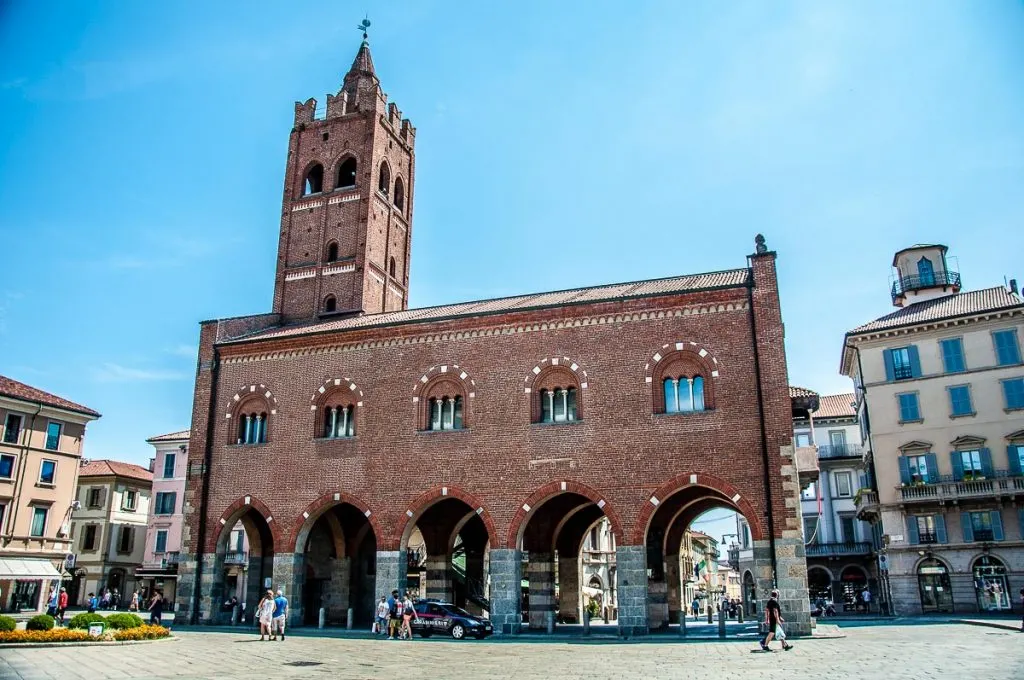
Monza is the third-largest city in Lombardy, Italy. It’s very close to Milan, so it makes for an incredibly easy visit as the journey by train there is on average only 10 mins. While Monza stays firmly off the beaten tourist track, there is a number of great sights to explore here. Including the Autodromo Nazionale di Monza – a historic race track that has been hosting the Italian Grand Prix since 1950!
In addition, here are some of the very best things you can see and do in this Lombardian city:
- Duomo – Monza’s Cathedral of San Giovanni looks like the little sister of Milan’s Duomo in terms of the shape of its facade. Monza’s Duomo though has a striking striped pattern in black and white marble. The 6th-century Chapel of Theodelinda is incorporated inside the cathedral. Theodelinda was born a Bavarian princess and became Queen of the Lombards by marrying their King – Autari. She was a Catholic and convinced him to convert to Christianity, too.
- Arengario – a 13th-century civic building in the heart of the historic centre. In the past, it was Monza’s town hall and hosted the meetings of the town’s councils.
- Monza Park – this is Europe’s largest walled park. It incorporates the Autodromo Nazionale di Monza. The park is crossed by the River Lambro and has expansive lawns and a wooded part that was once known as Bosco Bello – the Beautiful Forest. This is where, they say, the witch of Monza – Matta Tapina – used to live.
- Villa Reale – surrounded by Monza Park, this is a lavish palace in the Neoclassical style. It was originally built towards the end of the 18th century as a summer residence for the Archduke of Austria.
Tours and Activities in Monza, Lombardy:
If you only have a limited amount of time for Monza and prefer to be shown around by a professional tour guide, you can book this tour which includes the city centre, the Villa Reale, and the Autodromo Nazionale Monza.
13. Monte Isola – The Lombardian Town on Europe’s Largest Lake Island
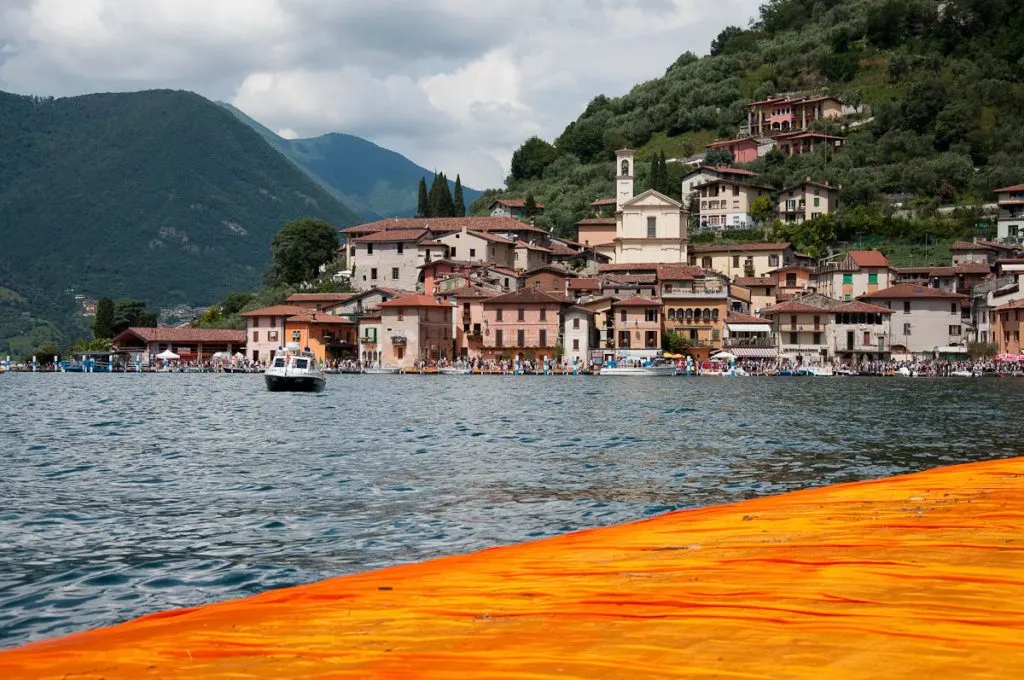
Monte Isola is the largest lake island in Europe. You will find it in Lago d’Iseo – a stunningly beautiful lake between Lake Garda and Lake Como. There are about eleven villages and hamlets here which are collectively referred to as the municipality of Monte Isola.
While this is not a city or a town in the common sense of the word, I placed Monte Isola on this list of must-see cities and towns in Lombardy for two reasons. One is that Monte Isola was chosen as one of the top three destinations in Europe in 2019. And two, because this is a truly beautiful corner of Lombardy that has preserved its authentic character.
With a secluded location at the foot and on the slopes of a large mountain and with the crystal clear waters of the lake acting as a natural barrier, until recently not many people had heard of Monte Isola or Lake Iseo for that matter. This changed when in June 2016 the great artist Christo positioned one of his most impressive installations here – The Floating Piers.
Large crowds flocked to Iseo to walk across the lake to Monte Isola. I had the chance to be among them and the experience was truly wonderful and memorable.
I also had a chance to return to Monte Isola several years afterward and see the island and its municipality as they usually are – secluded, incredibly picturesque, and so very authentic. Here are some of the very best things you can see and do in Monte Isola at Lake Iseo in Lombardy:
- Shrine of Madonna della Ceriola – a centuries-old sanctuary built on the highest point of the island. It is thought that it was erected at the spot of a former pagan temple. Inside it, you can see a 12th-century statue of the Madonna holding the Infant Christ. The locals believe that the statue is miraculous and that it protects the inhabitants of the island.
- Hiking – Monte Isola is a hikers’ heaven. You can enjoy long walks along the island’s perimeter, up to the summit of Monte Isola, and through olive groves and sites of natural beauty.
- Rocca Martinengo – a late medieval fortress. Nowadays, it is private property.
- Loreto – a small island near Monte Isola. It’s surrounded by fortified walls and crowned by a beautiful castle. It’s private property and in principle is closed for visits. Sporadically, jazz concerts are held here offering a rare chance to step on the island. The rest of the time, it can be admired from the water.
Insider Tips:
When visiting Monte Isola and Lake Iseo, don’t miss a chance to sample traditional local foods. The island is particularly famous for its extra virgin olive oil and different types of salami. The lake waters are teaming with fish. Dried sardines are a local delicacy.
Also, please, bear in mind that cars are banned on Monte Isola. The locals can drive motorcycles. Visitors can walk, hike, rent a bike, or make use of the small bus which connects the different villages and hamlets here.
14. Sirmione – The Must-See Historic Lakefront Town in Lombardy, Italy
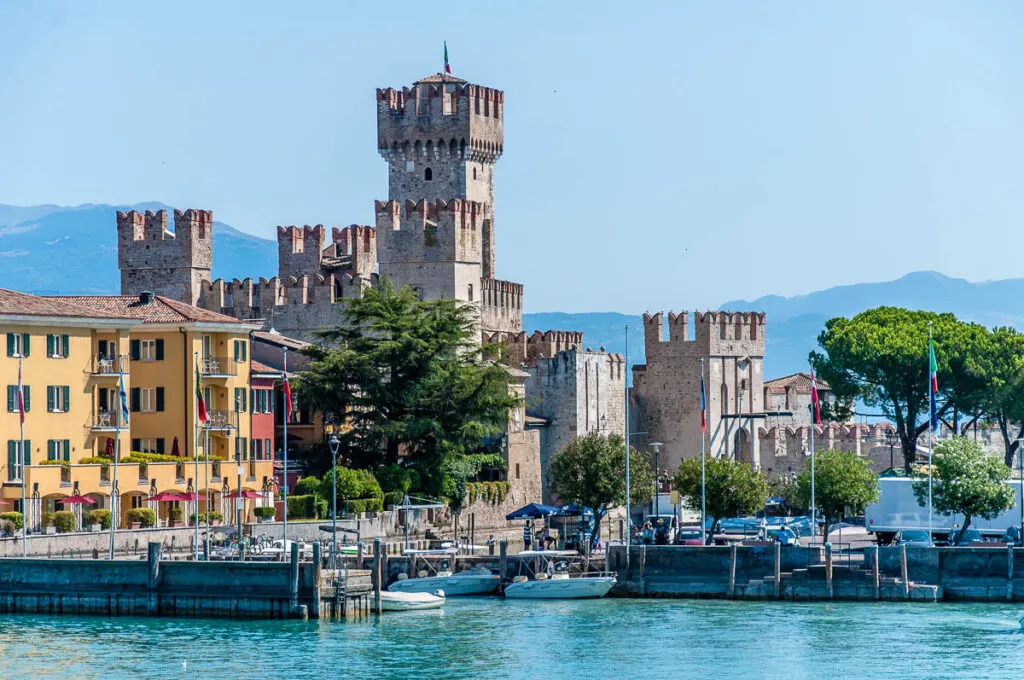
For its location, history, and sights Sirmione is one of the most striking towns not just in Lombardy but in the whole of Italy. You will find it on the tip of the narrow promontory Sirmio that juts deep into the waters of Lago di Garda – Italy’s largest lake.
The promontory is so long that it seems to bisect this corner of the lake in two. Some experts think that it was exactly the effect produced by Sirmio that inspired Lake Garda’s original name – Benacus (from the Celtic word for ‘horned’).
Surrounded by water on three sides, Sirmione is a delight to explore. Its historic centre stretches out between a proud medieval castle on one end and imposing Roman ruins on the other. The narrow streets are lined with picturesque houses draped with wisteria and bougainvillea.
There is lots to do and see in Sirmione. You can easily fill a whole day (if not more) here with sightseeing, sampling the local cuisine, and relaxing on the town’s famous beaches. Plus, don’t forget the local spas fed by mineral waters sprouting from the bottom of Lake Garda.
In a nutshell, here are some of the very best things you can see and do in Sirmione in Lombardy’s portion of Lake Garda:
- Scaliger Castle – a splendid medieval castle with crenelated walls and a fortified port. Click here for more details about the most beautiful castles around Lake Garda.
- Grotte di Catullo and Archaeological Museum – a vast archaeological park with the excavated ruins of a majestic Roman villa that was originally erected between the 1st century BC and the 1st century AD.
- Church of San Pietro in Mavino – built over a pre-existing pagan temple, this is Sirmione’s oldest church. Come here for its frescoes that span the period from the 12th to the 16th centuries.
- Beaches – Giamaica Beach and Lido delle Bionde are particularly famous.
- Spa resorts – the area of Sirmione has been known for its thermal waters since ancient times. Nowadays, large spa centres and facilities operate in town.
Insider Tips:
Round up your visit to Sirmione with a boat trip around the promontory on which this gorgeous town in Lombardy is built. Boats traditionally leave from the small marina next to the Scaliger Castle. You can either pay on the spot and join a tour with other tourists when a boat is available or book in advance (a good idea in summer when the town gets very busy). Alternatively, you can book a private tour by boat.
My favourite thing about the boat tour in Sirmione is when they take you to see one of the places where hot sulphuric waters come to the surface. Lake Garda is famous for its underwater thermal springs. You can actually see bubbles of air making their way up and you can imagine the thermal waters gushing at the bottom of the lake.
Tours and Activities in Sirmione, Lombardy:
This half-day tour is a great way to see some of Lake Garda’s most interesting historic castles coupled with a tasting of local wines. Alternatively, book this boat cruise that leaves from Sirmione and takes you to some of the most beautiful corners of Lake Garda (appetisers and swimming time are included, too).
15. Varenna – The Town of the Lariosaurus in Lombardy, Italy
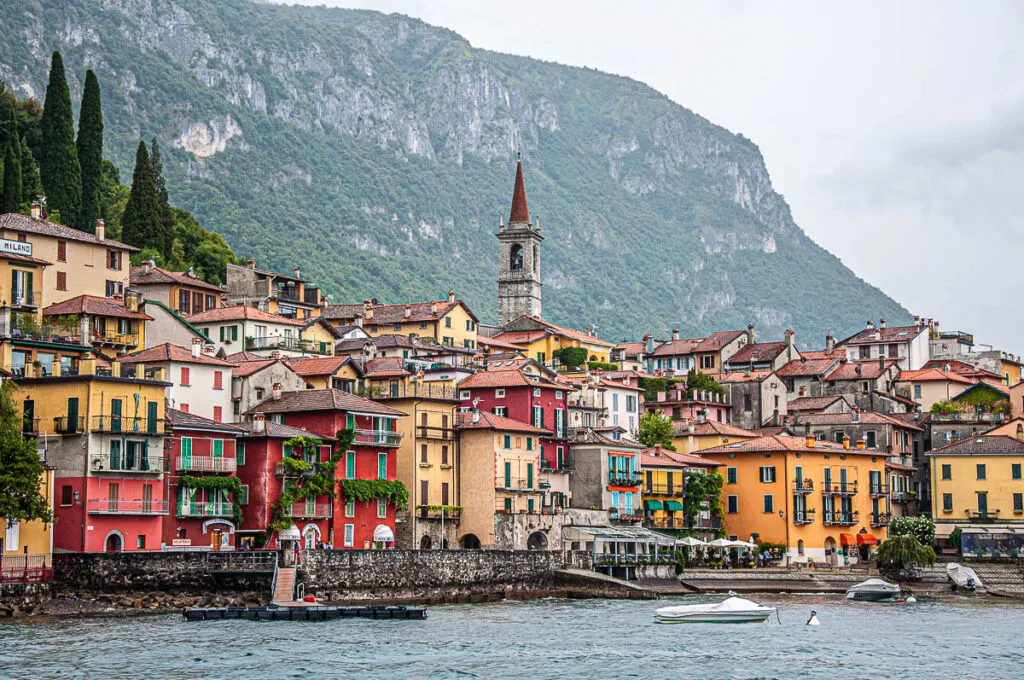
Varenna is another charming town on the shores of Lake Como in Lombardy, Italy. Tall houses huddle next to one another in its historic centre. Their bright colours are in striking contrast to the velvety green mountains that surround the lake.
It is here that in 1830 the meter-long fossils of a prehistoric reptile were uncovered. Dating to the Middle Triassic Age, it was named Lariosaurus after the old name of Lake Como – Lario. In terms of human activity, the area of Varenna has been inhabited since the Bronze Age. During the Middle Ages, a thriving fishing village existed here.
Nowadays, Varenna is directly connected to Milan by train. This makes it one of the easiest to visit pretty towns in Lombardy. Walking around the historic centre here is a very pleasant experience. With their innate sense of beauty, the Italians love using plants and planters to decorate facades, porches, balconies, and walls. This makes the whole town look like a garden in bloom.
Here are some of the very best things you can see and do in Varenna on Lake Como in Lombardy:
- Villa Monastero – a lavish villa with a terraced botanical garden. It affords some of the most iconic views of Lake Como.
- Vezio Castle – over a thousand years old, it was built by the Lombard Queen Theodelinda as a defensive military outpost. In the past, a strong defensive wall started from the castle and ran down on both sides of the hill all the way to the lake’s waters, thus holding in a tight embrace the town of Varenna. Nowadays, the wall is long gone. Yet the castle deserves a visit for the beautiful views it affords and also for its small exhibition dedicated to the Lariosaurus.
- Passeggiata degli Innamorati – a long promenade attached to the steep rocks of Varenna. Decorated with plants and shrubs, it opens beautiful views of Lake Como.
- Fiumelatte – this is one of the shortest rivers in Italy. It is only 250 m long. Fiumelatte flows only between March and September and it is dry the rest of the year. Its waters foam and bubble giving it a constant white appearance. This has inspired its name as Fiumelatte means the Milky River in English.
Insider Tips:
Get the train or do the short drive from Varenna to the small town of Bellano. It’s only seven km up the road. Here you can visit the majestic Orrido di Bellano – a series of powerful waterfalls running through a deep canyon. Long boardwalks have been attached to the rocks giving you a chance to walk above the fast-rushing waters for the best views.
Alternatively, drive from Varenna to the Piona Abbey. Centuries-old, it’s a hidden gem on Lake Como where you can enjoy peace and quiet.
Another option is to take the ferry across Lake Como to either Bellagio or Menaggio. Both have lots to offer as covered in points 2 and 10 above.
Tours and Activities in Varenna, Lombardy:
If you only have a limited amount of time for Varenna and Lake Como and prefer to be shown around by a professional tour guide, you can book this tour which also includes a visit to Bellagio. If you like to keep active, this hiking tour will take you to the best places around Varenna so that you can enjoy the nature and sights of this charming corner of Lake Como.
Learn More:
Practical Information about Visiting the Best Cities and Towns of Lombardy, Italy
Pin for Later!
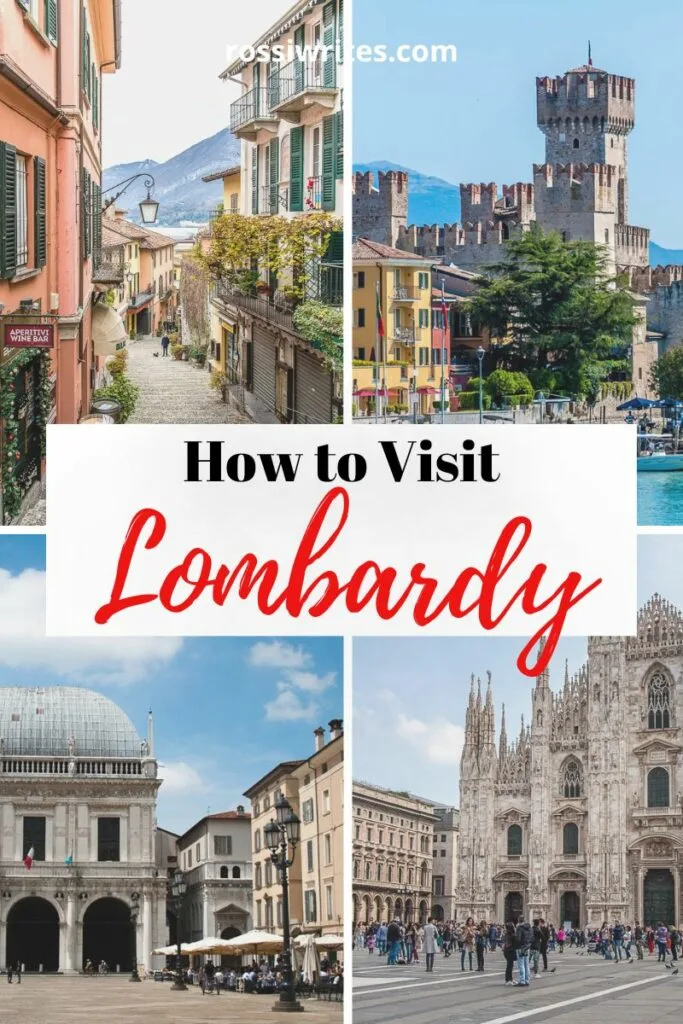
1. Where in Italy is Lombardy?
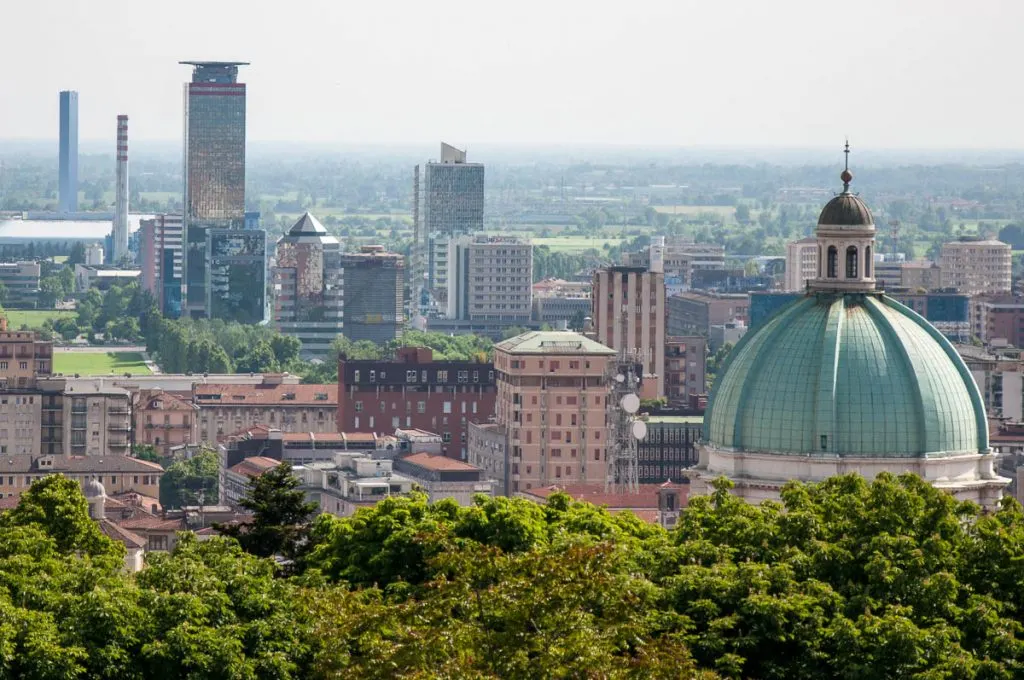
Lombardy is Italy’s richest and fourth-largest region. It stands in the north of the country. It borders Switzerland to the north, the Italian regions of Trentino-Alto Adige and Veneto to the east, Emilia-Romagna to the south, and Piedmont to the west.
2. How to Travel to and Around Lombardy, Italy?
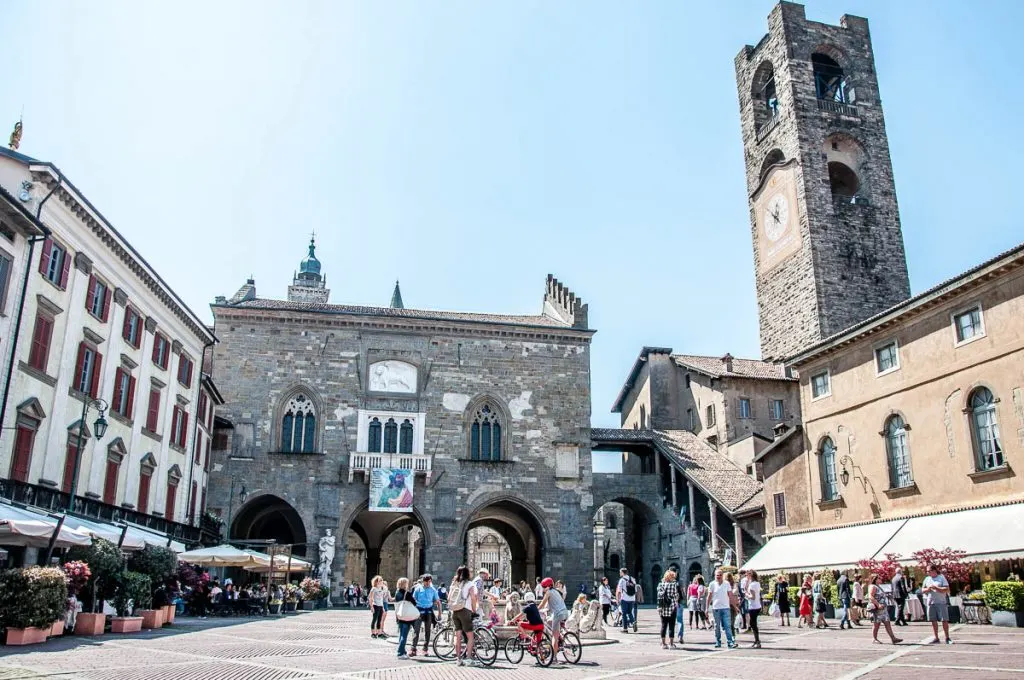
By plane, you can easily reach Lombardy from anywhere in the world. This is where three of Italy’s major airports are located. They are Milan Malpensa Airport, Milan Linate Airport, and Bergamo Orio-al-Serio Airport. Read more about them here:
In addition, you can easily reach Lombardy from anywhere in Veneto, Emilia-Romagna, Piedmont, and all other Italian regions. There are excellent connections between Italy’s main cities and smaller towns both by paid toll highways and regional/provincial roads.
You can also use public transport. Italy has a very well-developed railway system with fast and high-speed trains connecting cities, towns, and villages. For example, there are direct high-speed trains from Venice and Verona in Veneto to Lombardy’s capital city – Milan. There are excellent train connections between Bologna in Emilia-Romagna and Turin in Piedmont to Milan, too. Click here to check train times and to purchase train tickets.
Within Lombardy, you can use regional and high-speed trains to reach the different cities and towns here. Click here to check specific train times and to purchase train tickets.
There is a good bus system in Lombardy, too. Buses connect the smaller towns and villages to the region’s larger cities.
3. When Is the Best Time to Visit Lombardy, Italy?
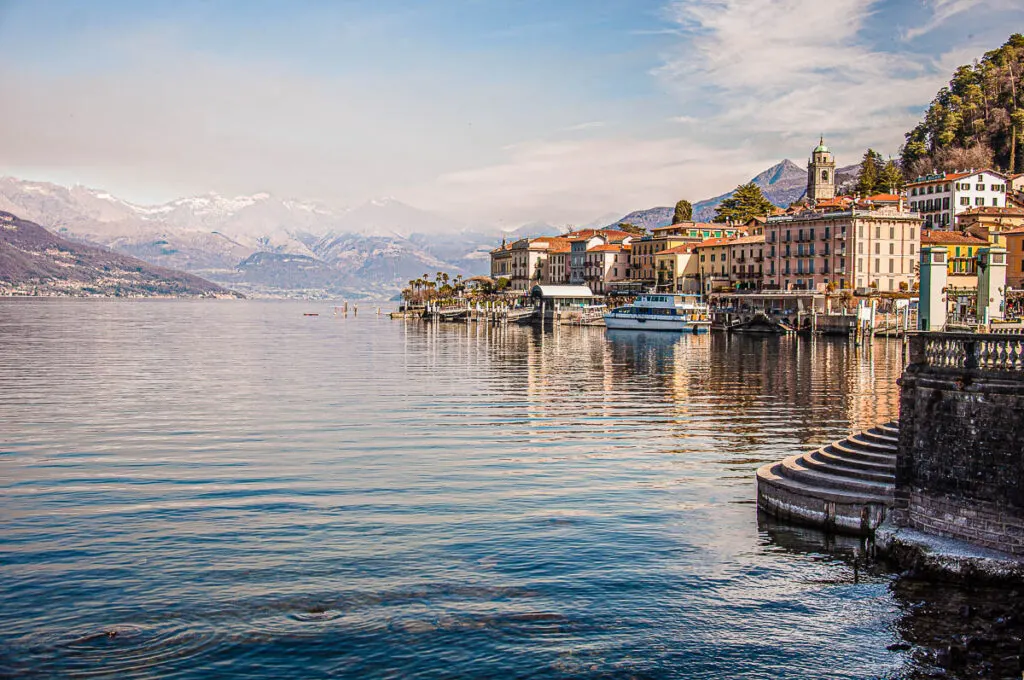
Lombardy in Italy is a great year-round destination. In summer, people come here to visit Lombardy’s capital Milan, to spend time at Lombardy’s lakes (with Lake Como a perennial favourite), and to explore the many options for relaxation and keeping active that the region offers.
In winter, Milan and the lakes are still very popular destinations. Plus, nearby there are many ski resorts.
4. Where to Stay in Lombardy, Italy?
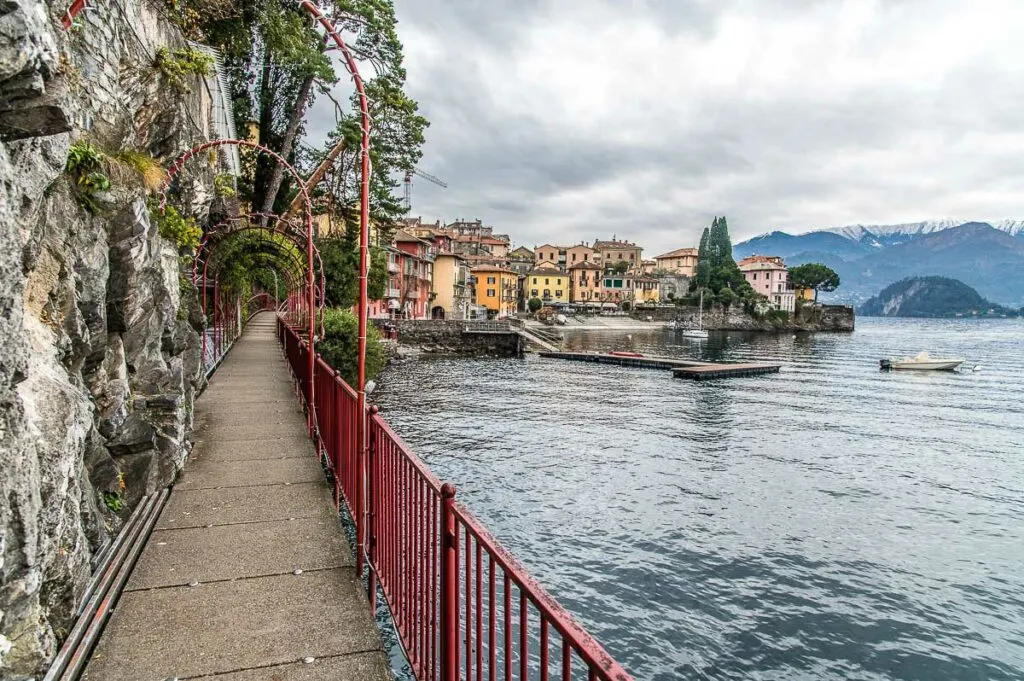
You can find all sorts and types of accommodation in Lombardy, Italy to suit every budget. From five-star hotels to budget camping sites, there is something for everyone. For ideas about the types of accommodation available in Lombardy in particular and Italy in general, have a look at this blog post:
Click for a full list with all available accommodation options in Lombardy, Italy.
In addition, this map gives you a quick visual idea of the price ranges of the many hotels and other forms of accommodation you can book for your visit here. You can zoom in and out in order to search for a place to stay in any Lombardian city or town. You can also click on the option that interests you to find out more details or to make a booking.
Booking.com5. What Are Some Great Tours and Activities to Book in Lombardy, Italy?
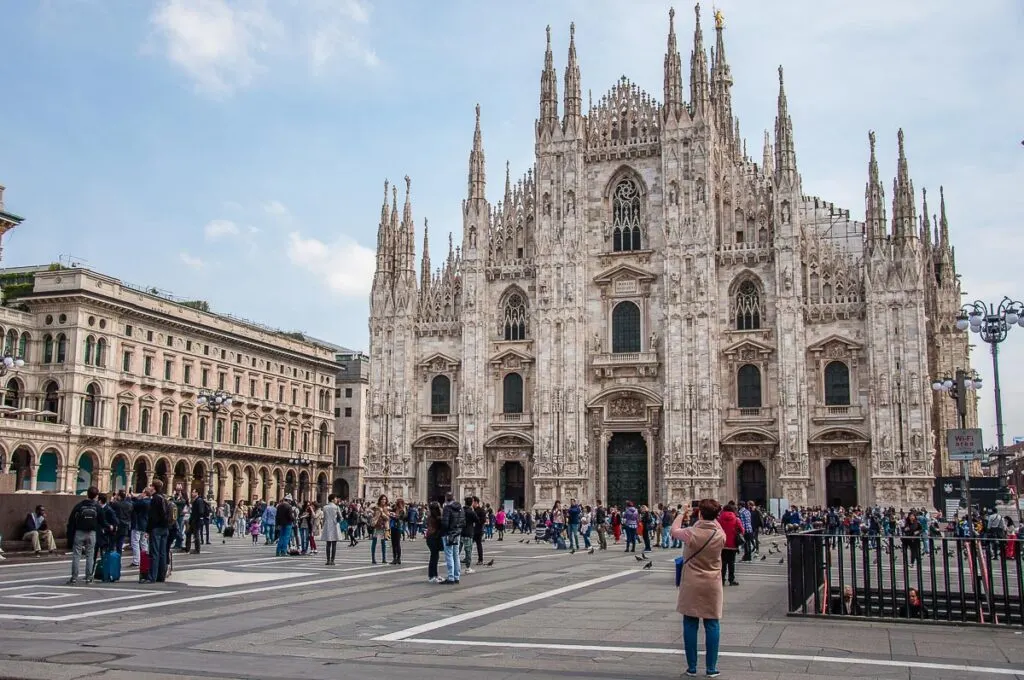
Click to see a long list of the best tours, activities, and experiences organised by different tour companies. You can narrow the options by pinpointing the city or town in Lombardy that you are interested in and the type of activities you want to book.
In addition, under most of the entries in this blog post, I have provided direct links to local tours, activities, and experiences. This way you can search for things to do in a more targeted way.
I hope this helps!
Where to Find More Information About the Northern Italian Region of Lombardy?
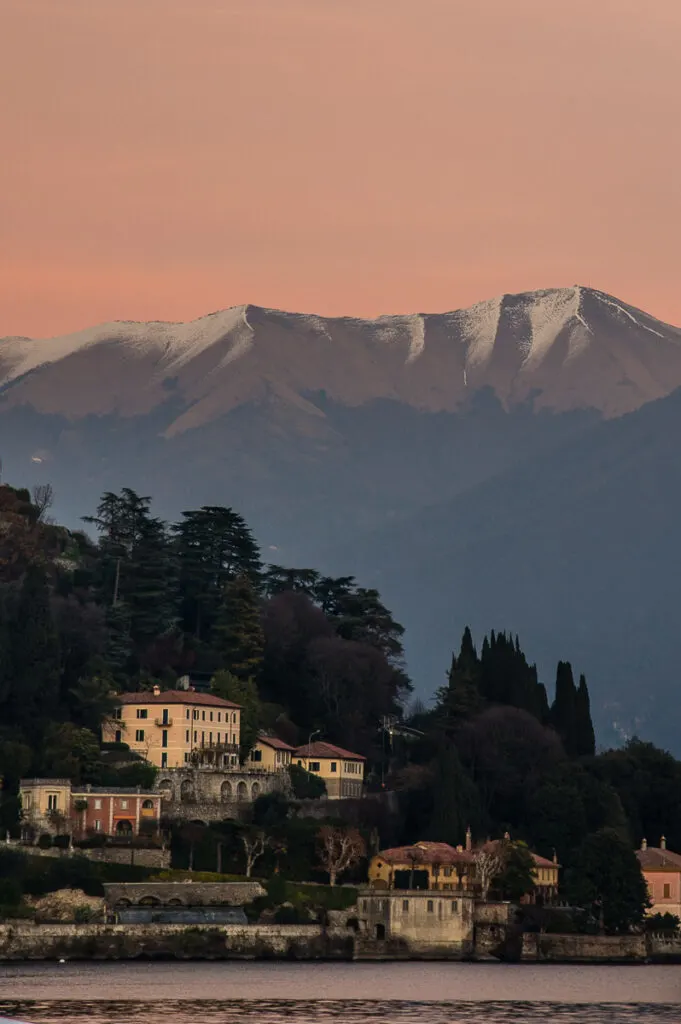
If you are considering a trip to Italy and the region of Lombardy sounds like a great destination to explore, you may want to also have a look at the following category and post on my blog:
- Lombardy – a full list of all my blog posts about this must-see region in Italy
- 10 Reasons to Visit the Region of Lombardy in Italy
They are based on my first-hand experience of visiting these destinations in Italy and provide lots of practical information to help you plan your travels.
In addition, for the most up-to-date information about events and local sights, keep an eye on the official websites of Milan and the Region of Lombardy.
Finally, if you want to invest in a good guidebook, this one covers Lombardy, Milan, and the Italian lakes which makes it very handy to carry around with you during your travels.
Where to Find More Information About Visiting Italy?
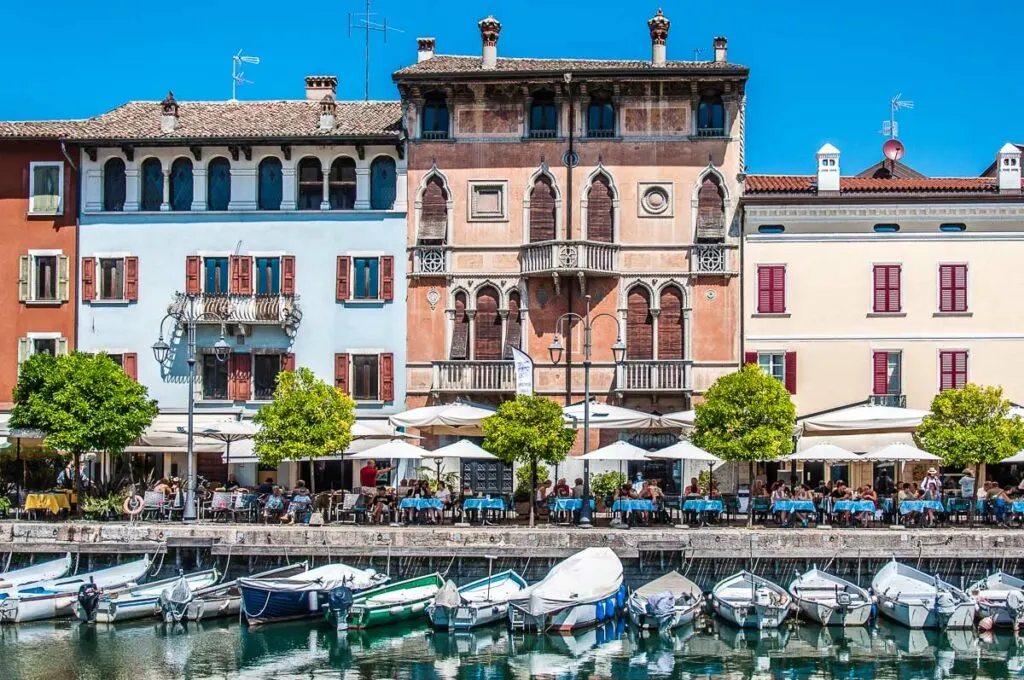
I have been blogging about travelling to and around Italy for eight years now providing detailed and first-hand tried and tested information about the best things to do in this beautiful country. It’s all based on my close to twenty years of visiting Italy solo and with my family. Six of these years, we actually spent living in Vicenza in the north of the country.
If you are after in-depth researched and illustrated with dozens of pertinent photos articles about Italy, have a look at the following categories and blog posts:
- Italy – a full list of all my blog posts about Italy
- 10 Reasons to Visit Northern Italy
- Veneto, Trentino, Emilia Romagna – full lists of all my blog posts about these Italian regions
- Venice, Padua, Lake Garda, Milan – full lists of all my blog posts about these must-see destinations in Italy.
In addition, right at the end of this blog post, you will find a list with links to some of my most popular blog posts about many beautiful and exciting cities, towns, and regions to visit in Italy. So, just scroll down and then click on the ones you are interested in.
Finally, Italy’s official tourism website is a great source of the latest news about travel in Italy. Otherwise, this is one of the best guidebooks about Italy.
In Conclusion
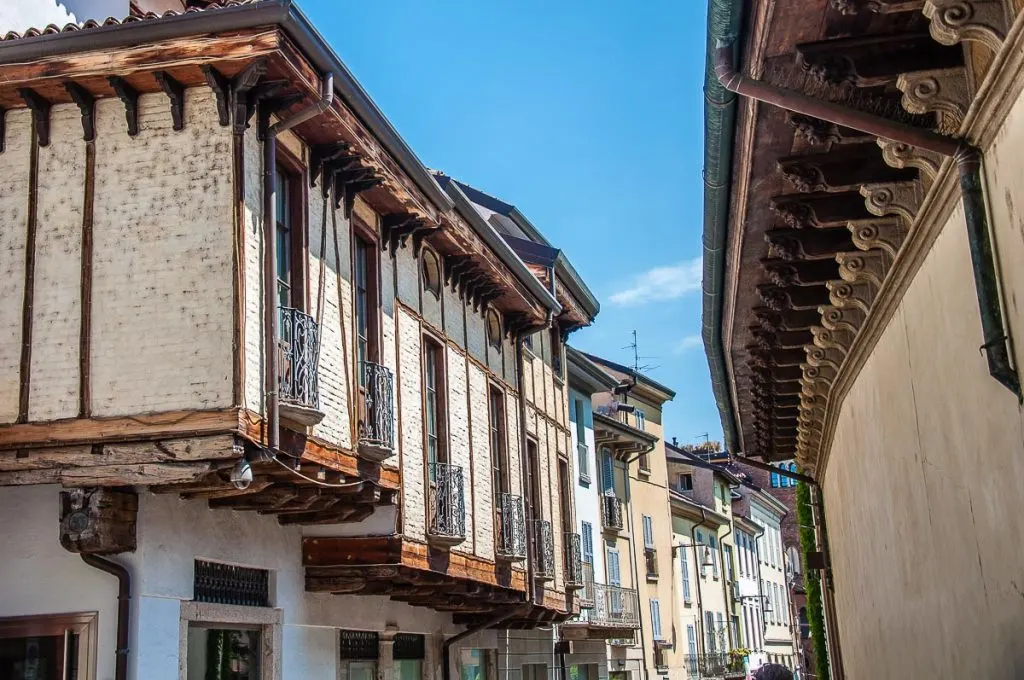
I hope you enjoyed this detailed introduction to 15 of the most beautiful cities and towns in Lombardy, Italy.
From the Lombardian capital – the city of Milan – to many hidden gems and lakefront towns, Lombardy is a northern Italian region that can offer you exciting sightseeing, unique landmarks, and gorgeous urban settings. Exploring its cities and towns equals delving into the best of Italy’s millennial history, culture, cuisine, and art. From Roman ruins to Renaissance palaces, from lavish villas featured in blockbuster films to places huddled in the bosom of nature, the Lombardian cities and towns have a lot to offer to the discerning traveller.
This blog post is packed with lots of useful information, insider tips, location and accommodation maps, and links to tours and activities for the best cities and towns in Lombardy.
I hope that after reading through it all, you will feel galvanised to discover the destinations covered herewith for yourself.
Enjoy your travels in Lombardy!
Travel Tools
Now, Get Ready Quick for Your Trip to Lombardy in Italy
Get a guidebook from Amazon.
Buy plane tickets, train tickets, and bus tickets through Omio.
Rent a car from Europcar.
Research accommodation on Booking.com.
Select local tours and activities on GetYourGuide, Viator, and Tiquets.
More Helpful Italy Info for You
Best of Italy: Italian Piazzas, Italian Markets, Accommodation for Every Budget, Best Times to Visit Italy, Italy in Summer, Italy with Kids
Italian Food: Best Italian Food Gifts, Cheap Italian Food, Rules of Italian Breakfast, Italian Breakfast Foods
Italian Coffee: Italian Coffee Culture, Italian Coffee Drinks, History of Coffee in Italy
Christmas in Italy: Fun Facts, Things to Do, Italian Nativity Scenes, Panettone, Christmas Guide
Northern Italy: Best Cities to Visit, Major Airports, Reasons to Visit
Lake Como: Best Things to Do, How to Get to Lake Como, Reasons to Visit in Winter, Inspiring Photos, Best Airports, Nesso
Lake Garda Towns and Villages: Best Towns, Desenzano del Garda, Riva del Garda, Malcesine, Torri del Benaco, Punta di San Vigilio, Campo di Brenzone, Borghetto and Valeggio sul Mincio
Visiting Lake Garda: Map of Lake Garda, Getting Around Lake Garda, Lake Garda with Kids, 8 Best Airports, Venice to Lake Garda, Verona to Lake Garda, Milan to Lake Garda, Bologna to Lake Garda
Verona: Things to Do in One Day, Verona Opera Festival, Day Trips from Verona, Romeo and Juliet Itinerary, Verona to Venice, Verona to Milan
Padua: Things to Do in One Day, 101 Facts About Padua, 10 Reasons to Visit Padua, Day Trips from Padua
Vicenza: Things to Do, Day Trips from Vicenza, Best Museums, The Beauty of Vicenza
Veneto: Top Places to Visit, Unique Adventures, Most Colourful Places, Mysterious Places, Most Beautiful Lakes, Reasons to Visit, Main Cities, Prettiest Small Towns, Most Beautiful Villages
Friuli Venezia Giulia: Venzone, Most Beautiful Villages
Emilia Romagna: Bologna, Ravenna, Comacchio, Most Beautiful Villages
Marche: Reasons to Visit, Gradara, Frasassi Caves, Temple of Valadier
Thank you for reading! Please, leave me a comment, pin the images or use the buttons right at the top and at the end of this blog post to share it on social media.
For more useful information like this, please, like my blog’s page on Facebook and Instagram and subscribe to my strictly no-spam newsletter.
Pin This Blog Post!
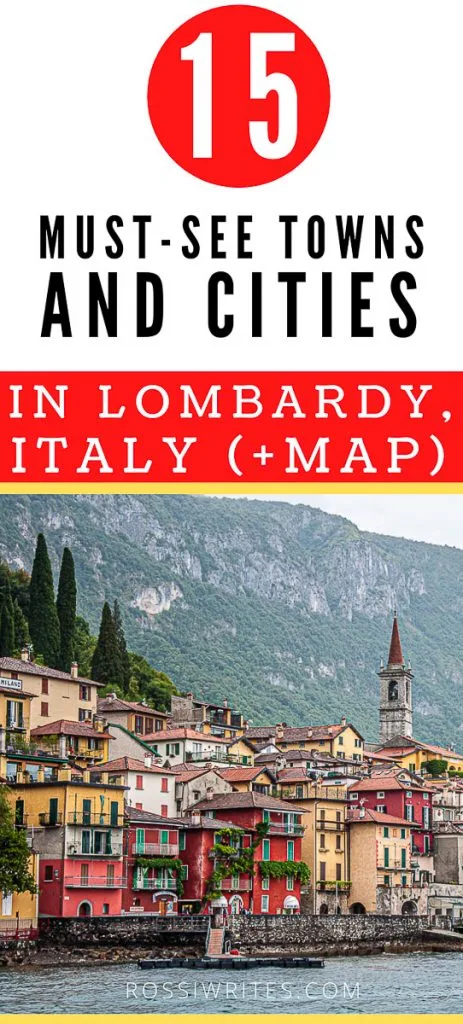
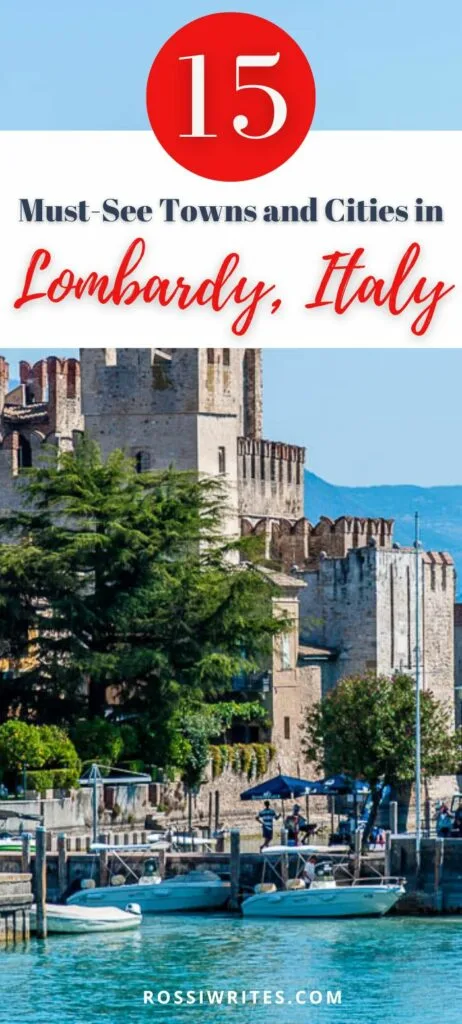

Egidio Bona
Saturday 18th of February 2023
This is an excellent presentation of Lombardy, one of the important regions in northern Italy. However, as I am living in the outskirts of Lecco (the other important town of Lake Como's lakefront with 48.000 inhabitants that reach 333.000 within its suburbs). Lecco is worldwide known for its climbers and mountaineers (Gruppo Ragni della Grignetta = Mount Grignetta's Group of Spiders) and lies just below three famous mountains: Mount Resegone (1878 mts a.s.l.), Mount Grigna Meridionale or Grignetta (2.184 mts) and Grigna Settentrionale or Grignone (2.410 mts). I honestly think that Lecco deserves a good place in your well detailed blog and would be please if you could add it in your Lombardy list. Thank you for your attention and congratulations for your blog!
admin
Monday 20th of February 2023
Many thanks for stopping by and for your very kind words! I am planning to expand this blog post in the near future with more cities and towns in Lombardy as I visit more of them this year (Pavia and Varese are in my travel plans!). I haven't added Lecco to the above list yet as I haven't had a chance to process my photos from Lecco which I took a month or so ago. Once the photos are ready, I will write about it, too as we indeed had a lovely time in this beautiful town on Lake Como. Thank you for sharing lots of Lecco links with me. I have saved them separately to check them one by one before deciding if I need to include them in my blog. Best wishes,
Rossi Thomson
Brian Neale
Saturday 18th of February 2023
I Love Italy We had Friends who were Italian And came from Bari. Frank and Joe Bracchi and their Families. Frank owned a Fish and Chip Shop and Joe owned a Cafe in the Rhondda Valley in South Wales. Joe made Delicious Ice cream his, own recipe which he said that he will take it to his grave. The Italians have a lovely way of talking which my mother loved to hear. I have been to Italy twice on holiday To Jesolo and Sabriadora And to Venice twice Which is one of my favourite Cities.
admin
Monday 20th of February 2023
Thank you for sharing your experiences! I am also always on the lookout for genuine Italian contacts and food experiences in the UK. It makes all the difference to be able to buy some delicious Italian gelato and other such delicacies either in London or Kent. Best wishes,
Rossi Thomson
Andreia
Thursday 30th of September 2021
This is a great post! So detailed and with so many great tips, it's great guidance for those of us planning a trip to Lombardy! Thanks so much for your great work
admin
Friday 1st of October 2021
Thank you for your kind words, Andreia! Have a great time in Lombardy. It's a beautiful corner of Italy.
Best wishes,
Rossi :)